Mapping Industry 4.0 Enabling Technologies into United Nations Sustainability Development Goals
Abstract
1. Introduction
2. Method
2.1. Identifying I4.0 Technologies
2.2. Mapping Method
3. Industry 4.0 Enabling Technologies
3.1. Industrial Internet of Things
- E1.1.
- General identification: General identification is the explicit designation of all the entities within the IIoT network, where entities can be internal in the system or external that are related to internal entities. Identification technology focuses on two main processes: naming, which refers to assign a specific name to the entity [21], and addressing, which specifies the entity unique address [22]. The key challenge of identification in IIoT is the applicability of the technology in heterogeneous platforms or networks, which facilitates the connection between industrial things.
- E1.2.
- Ubiquitous sensing: Sensing is the process of detecting events or change in the status of an object or system and sending this information into IIoT to enable deducing effective reactive actions or efficient future decisions. A variety of sensing devices exist including Radio-frequency identifier (RFID)tags, smart sensors, and wearable sensing devices [23]. These devices will be ubiquitous in wider contexts in IIoT, giving a digital nervous system for the industry [24].
- E1.3.
- Seamless and real-time communication: A seamless communication refers to sending or receiving information (i.e., message, files) between heterogeneous devices via any IIoT network at any bandwidth or speed. The connection in IIoT networks supposed to be with zero latency and has an unlimited throughput [25]. Many communication technologies can be utilized in IIoT including RFID [26], Near-field communication (NFC) [27], Bluetooth [28], Long-Term Evolution (LTE), and 5G Wi-Fi [29].
- E1.4.
- Embedded and edge computation: Products, machines, and even tools will be equipped with embedded boards and systems designed to perform a specific function, and it will be supported by processing hubs or cores located close to the endpoints of data source or usage. IIoT systems rely widely on embedded and edge computation to address the limitation of centralized computation such as latency, bandwidth, data privacy, and autonomy [30].
- E1.5.
- Service-Oriented Architecture (SOA): SOA refers to the availability of information or functions as services in the IIoT cloud, exerting ubiquitous services collaboration [31]. Services usage and collaboration are offered in a context-aware manner, where the identity of the objects who request the service is accessed, aggregated, and processed, as well as any related information. Services are available on time to respond to requests without rigidity about time or location [23].
- E1.6.
- Interoperable semantic-based communication: I4.0 devices are supplied by different manufacturers, connected to different domains, or use different communication protocols. This heterogeneity creates a lack of interoperability between these devices and means that achieving a flexible digitalization between such devices is a challenge. Semantic technology is the solution that enabling the interoperable and flexible communication between these seamless devices, as well as between human and artificial agents [32]. Semantic web technologies offer a standardized representation of knowledge (i.e., RDF, RDF Schema, and OWL) and a semantic query language called SPARQL [33].
3.2. Big Data and Analytics
- E2.1.
- Sensors: Sensors are one of the most important data sources in the industry, e.g., sensors in industrial devices and machines recorded values of parameters of production processes, as well as sensors in medical healthcare, and in public utilities recording data on media consumption or failures. The variety of domains is a characteristic of BD sensing. Sensing is also associated with deploying sensor clouds, automation of data sensing, and ensuring sensors’ infrastructure scalability. In the context of BD, an important challenge is the creation of sensors networking and sensors cloud computing, which are needed to gain highly efficient BD services.
- E2.2.
- Data collecting: Dealing with continuous data growth is crucial for collecting large amounts of data. The basis for collecting BD is clusters of servers (nodes) and Distributed File Systems (DFS). Computational nodes allow for distributed processing. It provides high scalability and high fault tolerance [38]. Whereas DFS can handle hundreds of nodes in a cluster. It manages files on distributed nodes, reduces network congestion, and increases system performance. BD can also be collected in their native formats and uses flat architecture, thanks to “data lakes” [39].
- E2.3.
- Data processing: Processing BD based on two functions: Map and Reduce, that are combined as “MapReduce”–programming model, which allows creating applications running simultaneously on many computers. Other concepts that enable parallel execution of applications and use thousands of nodes at one time are “YARN” and “Dryad” [40,41]. BD can generate data streams at extremely high speed, so it will not be feasible or cost effective to store whole datasets. Therefore, a real-time processing of data streams is important challenge for modern data processing [42].
- E2.4.
- Data querying: In the case of BD, it is important to support data processing due to converting high level queries into MapReduce tasks, reducing MapReduce complexity, and simplifying exploration in parallel, especially in massive datasets. These challenges are met, e.g., by high level scripting language “Pig Latin” or declarative language “JAQL”. However, the above mentioned issues that concerning data querying optimization are still open challenges [40,43].
- E2.5.
- Data access: Technologies related to data access enable efficient data transfer between BD clusters of nodes and structured data stores (relational databases, enterprise data warehouses). Due to variety of BD sources, an integration of that data sources is a core challenge both for data collecting and data access. Other technologies provide in-memory data access that enable run applications many times faster, as well as support real-time processing, on-line machine learning, and continuous calculations [44,45].
- E2.6.
- Data analytics: In total, four types of analytics have been defined: descriptive —summarizing existing datasets in order to get insight into the past; diagnostic—determining why something happened in the past; predictive—using a model developed based on existing data to predict future data; prescriptive—using optimization methods to recommend a specific course of action. Despite the fact that listed types existed before the era of BD, they can also be used for large industrial datasets [35]. However, generating insights in a timely manner is still a core challenge for BD analytics.
- E2.7.
- Decision-making support: From the viewpoint of I4.0 and BD, machine learning, and deep learning can be crucial to support the decision-making process. They allow discovering information from large volumes of uncategorized data. This is confirmed by many real world applications, such as recommendation engines, recognition systems, autonomous control systems [46], and decision support systems for reducing production costs [47]. Data mining methods are complemented by visualization that helps present the information more intuitively and efficiently [41].
- E2.8.
- Data management techniques and methods: BD requires appropriate data management methods and techniques that will make it possible to: coordinate applications and nodes in clusters, replicate services to protect data and nodes from failures, and recover system automatically. Management tools also allow for making interface where developers can view the system, create and manage user accounts, and monitor cluster health [48]. Different enterprises may have their own transmission protocols, data storage procedures, data formats, etc. This can be a serious challenge that hinders the creation of a universal data management system.
3.3. Cloud Computing
- E3.1.
- Computing: CC technology is the delivery of computing resources and power from remote locations, which do not require high facility investments for the user. In the past years, many successful commercial CC solutions like Microsoft Azure [50], Amazon web services [51], IBM Cloud [52], Google compute engine [53], etc. Meanwhile, there are also open cloud platforms like Openstack [54], Apache CloudStack [55], Apache Mesos [56], and so forth. These platforms provide different options of the industry to facilitate the computing structure within a private, community or public domain. For cloud users, the challenge is to identify the proper computing solution that is suitable for the business and safety requirements.
- E3.2.
- Interoperability: Interoperability refers to the capability of different systems, components, or products to understand and work with each other. In practice, a feasible engineering system needs to guarantee the interoperability at different levels, i.e., semantic, syntax, database, hardware, protocol, system, etc. [57,58,59]. In an I4.0 scenario, multiple novel technologies must be able to communicate and work with each other [60].
- E3.3.
- Servicelisation: (on the Cloud): cloud-based servicelisation is the delivery of the computing resources in terms of service. Service user can use and pay based on the exact amount of service that is needed, i.e., pay-as-you-go principle. In the past years, different approaches have been proposed to offer the engineering resource and capability on the cloud in terms of services [61,62]. Both the hardware and software are capable to be encapsulated in terms of scalable services, and provided in the cloud resource pool [63].
- E3.4.
- Cloud Manufacturing: based on the success of CC and servicelisation, the cloud concept is further extended to the manufacturing domain, thus forming cloud manufacturing technology. Cloud manufacturing refers to network access to a shared pool of configurable manufacturing resources [64,65,66]. In cloud manufacturing, the manufacturing hardware and software can be servicelised and offered on the cloud to provide accessible and elastic manufacturing capabilities with a low initial investment for the users.
3.4. Simulation
- E4.1.
- Product and processes: Product and processes simulation is crucial and provides the basis for simulating larger systems that creates I4.0. Simulation in this part includes Finite Element Analysis (FEA) [69], simulation of acoustics performance of the product [70,71] simulation of composites structures behavior and the progressive degradation [72,73] and fluid dynamics simulation [74] can be distinguished. One of process simulation challenges is the development of Computer Aided Manufacturing (CAM) to automate a manufacturing process [75].
- E4.2.
- Production lines, workstations, and internal logistics: The key role to create a virtual factory is to use Discrete Event Simulation (DES). According to [76], the virtual factory that also known as digital twin is an extended use of simulation not just in the design state and planning phase, but also in the entire lifecycle of manufactured products [77]. There is also a growing interest in implementing Virtual Reality (VR) to improve existing work procedures and factory layout planning [78].
- E4.3.
- Enterprise and its operational environment: Simulation allows for a better understanding of the dynamics of business complex systems, such as enterprises, supply chains, and networks. The main simulation approaches used in this area are system dynamics (SD), DES and agent-based simulation (ABS). The DES is highly mature and applied in many fields across enterprises [79,80]. Unlike SD and DES, ABS focuses on individual activities of system components [81]. These simulation techniques are often combined to enable simulating the work of the entire system of enterprises, which in fact a challenging in developing harmonized and reliable models [82].
3.5. Augmented Reality
- E5.1.
- E5.2.
- Human interaction: The possibility of interaction between human beings is improved. It is possible to collaborate in an immersive manner even if the collaborators are not present in the same place. Anticipation long ago [87] is now pervasive by fast internet and cheaper devices.
- E5.3.
- E5.4.
- E5.5.
- Simulation: Augmented reality is a useful tool for design, as it enables the simulation of production processes before they are performed. Using completely immersive virtual environments, it is possible, for example, to design industrial plants in detail, or to program computer numerical control machines by virtualizing the production process [83,84,86].
3.6. Additive Manufacturing
- E6.1.
- Processesfor polymers: AM processes for polymers exploit different physical principles for the layer-wise fabrication of parts made of thermoplastic or thermosetting materials. Composite parts with a polymeric matrix can also be manufactured with short or continuous reinforcement fibers. In the I4.0 framework, the digital workflow and process allow to constantly monitor the state of part production. Sustainability is promoted by the optimal use of material with low production waste and no specific production tools. Process productivity and a wider material range are the challenges for the future development of these technologies.
- E6.2.
- Processes for metals: AM processes for metals include direct and indirect technologies. Direct processes include powder bed fusion (PBF) with laser or electron beam sources and directed energy deposition (DED), also known as cladding. Nowadays, the application of powder-bed fusion technologies is consolidated in many industrial sectors as an alternative to traditional manufacturing for small production batches or single components [93]. Indirect processes are based on binder jetting or material extrusion and involve post-processing operations including a final sintering phase to fabricate dense metal parts [94]. Process productivity and a wider material range are the future challenges for these technologies.
- E6.3.
- Processes for ceramics: AM techniques for ceramic materials are not widely spread because of the limited industrial interest that often comes from niche sectors. Although most of AM processes are characterized by small build volumes, this limitation is even more stringent in the case of ceramics [95]. Ceramics are mainly processed by laser powder bed fusion or by binder jetting, an indirect process that requires post-processing phases and sintering to get dense parts [96]. Larger build volumes and productivity are the challenges for the future developments of AM processes for ceramics.
- E6.4.
- Materials: Raw materials for AM are supplied in the state of viscous liquid, powder or solid (pellets, filament, or wire) feedstock [97]. The variety of materials that can be processed by AM techniques is narrow if compared to that of traditional processes. However, R&D activities are continuously focused on developing new materials for AM, so the variety is constantly increasing. Optimal usage and exploitation of materials with lower production scraps are the potential benefits of AM [98]. Better process reliability and operator knowledge are the challenges for future improvements within the sustainability framework.
- E6.5.
- Design for AM: The key success for AM adoption is to identify a specific benefit that can provide an added value to the AM product by enhancing its performance and functionality. AM achieves its full potential (even under the environmental perspective) when the component is re-designed for the AM technology and the main benefit of the improved product performance is capitalized upon during the use phase [99]. The main challenge for this key element is the promotion and diffusion of this innovative way of designing and conceiving new products to be fabricated by AM technologies.
- E6.6.
- Software: Throughout the AM workflow, different software packages are generally employed. A 3D modeling package is used to define the virtual solid model of the product. Generative design or topology optimization are tools that compute the best material distribution within an assigned design volume while considering engineering constraints and loads [100]. A slicing software is used to generate the manufacturing path for each layer and to convert the path in the proprietary code or open ISO G-code to be sent to the AM machine. The main challenge for the software is to achieve a higher reliability in the simulation of AM processes for predicting part deformation and quality [101].
3.7. Horizontal and Vertical System Integration
- E7.1.
- ReferenceArchitecture: Integration needs common models and architectures to define a communication structure. To enable effective integration, a common language with signs, alphabets, vocabulary, syntax, grammar, semantics, and pragmatics cultures are essentials. When we are talking about vertical and horizontal integration reference architectures, such as the old CIM-OSA, PERA, GERAM, ISA-95 are those that immediately come to mind [106]. The Reference Architecture Model Industrie 4.0 (RAMI 4.0) is very important and will be discussed in the next point. However, other models exist such as the Industrial Internet Reference Architecture (IIRA), and the Internet of Things Reference Architecture (IoT RA) [107]. However, interoperability and security are open challenges for such reference architecture, especially in heterogeneous systems [108].
- E7.2.
- RAMI4.0: German ‘Platform I4.0’ developed a service-oriented architecture special for I4.0 so-called RAMI 4.0 [109]. It defines the domains of industry 4.0 represented in a three-dimensional model: Layers, Lifecycle and Value Stream, and Hierarchy Levels [110]. The layers represent various perspectives, including assets and hardware, data and communication, and functional description and business process. The Lifecycle and Value Stream cover the whole product lifecycle from the development stage into the end life (i.e., recycle and scrap). The third dimension describes the hierarchical levels in the I4.0 system, starting from the product and field devices through control devices and stations into the workstation and enterprises [111].
- E7.3.
- SystemsIntegration: System integration is one of the major difficulties in traditional automation systems. Different interoperability technologies and standardize models were developed to tackle these issues. This technology includes Electronic Device Description, Filed Device Integration, OPCU UA, Gateway and Mediator, AutomationML and semantic standardization, such as eCl@ss [112]. However, in the I4.0 environment, the integration problem is more complicated. I4.0 systems are intended to bring together sub-systems (i.e., machines, robots, sensors) that could be heterogenous, supplied by different manufacturer and have different interfaces [113]. Different models represent data information, functions, and diverse interfaces are used to access data. These heterogeneities make adaptation and mediation between models a major challenge [114].
- E7.4.
- DigitalTwins: Digital Twin (DT) is the effective tool to realize I4.0 smart manufacturing with dynamic modeling, real time simulation, and smart decision-making [115]. DT reflects the physical status of the factory in a virtual space using Computer-Aided Design models in high fidelity. It provides real-time 2-way communication, various scenario simulation, and interactive decision-support [116]. DT is a hot topic in both academia and industry, and many aspects has a room for improvements including modular based DT, modeling consistency and accuracy, VR integration into DT, efficient mapping between virtual and real data [117].
- E7.5.
- Cyber PhysicalSystem (CPS): CPS is a complex and multidimensional system that integrates the system physical resources into cyber world. CPS provides a real-time sensing, information and data feedback, dynamic control and more services through the collaboration and integration of communication, computing, and control [118]. The integration in CPS is in both the horizontal and vertical integrations, with more focus on the vertical direction [119]. Towards the realization of CPS, a lot of effort is needed in many areas, especially in modelling (i.e., CPS platform), models integration, verification and testing [120,121].
- E7.6.
- Systemof Systems (CPSs): CPSs are a collection of task-oriented or dedicated systems that pool their resources and capabilities together to create more complex systems, which offer more extended functionality and performance [112]. CPSs become alive by exchanging information and capabilities between systems’ constituents in both virtual and the physical environments via interfaces in a service oriented manner [118]. Interfaces are the enabler for many functionalities of CPSs and, therefore, need detailed attention in terms of authentication and security, as well as in data sovereignty and ownerships [108]. This intended system solidarity rises many challenges, especially in the horizontal direction such as integration and collaboration between CPSs [120].
- E7.7.
- CollaborativeNetworks (CNs): Collaboration exists and is needed for almost all the enablers and technological elements of I4.0, either explicitly or implicitly. CNs are applied to many domains and supported by variety of collaboration forms, which ranges from industry dynamic structure to supply chain and extended services [122]. CNs can be a goal-oriented or long-term strategic network. While the former characterizes by an intense interaction among participants to reach a common goal, the latter characterizes as a strategic alliance to act as a source breeding environment for the former, aiming to provide supportive networks [123]. Research in CNs are directed towards human-machine and machine-machine collaboration, development of collaboration platforms, enhancing resilience and sustainability, and building collaboration culture and awareness [124].
3.8. Autonomous Robots
- E8.1.
- Perception: The key element in the development of ARs is perception, which consists of data acquisition and consequent extraction of useful information about the environment in which ARs operate. Due to the increased requirements for the ARs related to I4.0, this element is getting more challenging. The most basic task that robots can do, is positioning themselves relatively to some reference point in the environment. This can be done using various technologies: 2D and 3D digital cameras [127], GPS [128], lidar [129], ultrasonic and infrared sensors [130], magnetic sensors, etc. In addition, with the development of the soft robotics [131], new sensing principles are emerging [132].
- E8.2.
- Deliberation: In I4.0, there is an increasing need for flexible ARs that can be adapted to various tasks and interact to different situations, as well as integrated in any environment. In such a setting, the need for deliberation is highly expressed. Acting deliberately is related to the “actions that are motivated by some intended objectives and that are justified by sound reasoning with respect to these objectives” [133]. To act deliberately, the following functions are required [133]: planning, acting, observing, monitoring, goal reasoning, and learning. Descriptive, operational, open environment models, model acquisition, model verification issues, integration of the observing function with other deliberation functions and integration, as well as architecture issues are all open challenges within this element [133].
- E8.3.
- Autonomy: Autonomy in ARs is defined as “the extent to which a robot can sense the environment, plan based on that environment, and act upon that environment, with the intent of reaching some goal (either given to or created by the robot) without external control” [134]. Artificial Intelligence is of enormous importance for this purpose [135]. However, striking the right balance between robot autonomy and human control is a core challenge, in both technical and ethical terms [136]. An important concept related to autonomy is dependability—the “ability to deliver trusted services” [137]— which mainly focuses on fault management in terms of prevention, removal, forecasting, and tolerance [138].
3.9. Cybersecurity
- E9.1.
- Threat identification and detection: As the number and sophistication of cyber threats increases, security systems are being improved in detection capabilities [143]. In general, cyber threats can be of various kinds: malware, phishing and spear phishing, man-in-the-middle attacks, trojans, ransomware, denial or distributed denial of service attacks, attacks on IoT devices, data breaches, etc. All of these are related to Industry 4.0 at various degrees and also ways of fighting them are quite diverse [141,144,145,146]. These security threats are one of the biggest and ever-growing challenges for IIoT, and it is essential to substantially mitigate them for its success [147].
- E9.2.
- Data loss prevention: Data Loss Protection (DLP) denotes a set of tools and processes used to ensure that sensitive data is not lost, misused, or accessed by unauthorized users. In the vision of I4.0 a lot of processes are taking place in clouds, which makes DLP and cybersecurity in general even more challenging. A potential technology that gets mentioned often in relation to DLP is blockchain technology [148]. It is a promising technology from various aspects [149]: authentication, confidentiality, accountability and non-repudiation, traceability, and revocation.
4. Mapping Result
4.1. Industrial Internet of Things
4.2. Big Data and Analytics
4.3. Cloud Computing
4.4. Simulation
4.5. Augmented Reality
4.6. Additive Manufacturing
4.7. Horizontal and Vertical System Integration
4.8. Autonomous Robots
4.9. Cybersecurity
4.10. Result Summary
5. Conclusions
Supplementary Materials
Author Contributions
Funding
Institutional Review Board Statement
Informed Consent Statement
Conflicts of Interest
References
- Davies, R. Industry 4.0 Digitalisation for Productivity and Growth, Luxembourg. 2015. Available online: http://www.europarl.europa.eu/thinktank/en/document.html?reference=EPRS_BRI%282015%29568337 (accessed on 25 February 2021).
- Shrouf, F.; Ordieres, J.; Miragliotta, G. Smart factories in Industry 4. In 0: A review of the concept and of energy management approached in production based on the Internet of Things paradigm. In Proceedings of the IEEE International Conference on Industrial Engineering and Engineering Management, Selangor, Malaysia, 9–12 December 2014; pp. 697–701. [Google Scholar] [CrossRef]
- Bonilla, S.H.; Silva, H.R.O.; Terra, M.; Gonçalves, R.F.; Sacomano, J.B. Industry 4.0 and Sustainability Implications: A Scenario-Based Analysis of the Impacts and Challenges. Sustainability 2018, 2–24. [Google Scholar] [CrossRef]
- Dossou, P.-E. Impact of Sustainability on the supply chain 4.0 performance. Proc. Manuf. 2018, 17, 452–459. [Google Scholar] [CrossRef]
- Pizzi, S.; Caputo, A.; Corvino, A.; Venturelli, A. Management research and the UN sustainable development goals (SDGs): A bibliometric investigation and systematic review. J. Clean. Prod. 2020, 276, 124033. [Google Scholar] [CrossRef]
- UN Statistical Commission. Global Indicator Framework for the Sustainable Development Goals and Targets of the 2030 Agenda for Sustainable Development; UN Statistical Commission: New York, NY, USA, 2017. [Google Scholar]
- Hák, T.; Janoušková, S.; Moldan, B. Sustainable Development Goals: A need for relevant indicators. Ecol. Indic. 2016, 60, 565–573. [Google Scholar] [CrossRef]
- Stafford-Smith, M.; Griggs, D.; Gaffney, O.; Ullah, F.; Reyers, B.; Kanie, N.; Stigson, B.; Shrivastava, P.; Leach, M.; O’Connell, D. Integration: The key to implementing the Sustainable Development Goals. Sustain. Sci. 2017, 12, 911–919. [Google Scholar] [CrossRef] [PubMed]
- Nerini, F.F.; Tomei, J.; To, L.S.; Bisaga, I.; Parikh, P.; Black, M.; Borrion, A.; Spataru, C.; Broto, V.C.; Anandarajah, G.; et al. Mapping synergies and trade-offs between energy and the Sustainable Development Goals. Nat. Energy 2018, 3, 10–15. [Google Scholar] [CrossRef]
- Khamis, A.; Li, H.; Prestes, E.; Haidegger, T. AI: A Key Enabler of Sustainable Development Goals, Part 1 [Industry Activities]. IEEE Robot. Autom. Mag. 2019, 26. [Google Scholar] [CrossRef]
- Khamis, A.; Li, H.; Prestes, E.; Haidegger, T. AI: A Key Enabler for Sustainable Development Goals: Part 2 [Industry Activities]. IEEE Robot. Autom. Mag. 2019, 26, 122–127. [Google Scholar] [CrossRef]
- Vinuesa, R.; Azizpour, H.; Leite, I.; Balaam, M.; Dignum, V.; Domisch, S.; Felländer, A.; Langhans, S.D.; Tegmark, M.; Nerini, F.F. The role of artificial intelligence in achieving the Sustainable Development Goals. Nat. Commun. 2020, 11. [Google Scholar] [CrossRef]
- Gupta, J.; Vegelin, C. Sustainable development goals and inclusive development. Int. Environ. Agreements Polit. Law Econ. 2016, 16, 433–448. [Google Scholar] [CrossRef]
- MAESTRO. Manufacturing Education for a Sustainable Fourth Industrial Revolution (MAESTRO), Intelligence Automotive Centre, Wolfson School of Mechanical and Electronics Manufacturing Engineering. 2020. Available online: https://www.lboro.ac.uk/research/intelligent-automation/research/projects/maestro/ (accessed on 25 February 2021).
- Gilchrist, A. Introducing I4.0; Apress: Berkeley, CA, USA, 2016. [Google Scholar] [CrossRef]
- Saucedo-Martínez, M.J.A.; Pérez-Lara, J.A.; Marmolejo-Saucedo, T.E.; Salais-Fierro, P. Vasant, Industry 4.0 framework for management and operations: A review. J. Ambient Intell. Humaniz. Comput. 2018, 9, 789–801. [Google Scholar] [CrossRef]
- Alcácer, V.; Cruz-Machado, V. Engineering Science and Technology, an International Journal Scanning the Industry 4.0: A Literature Review on Technologies for Manufacturing Systems. Eng. Sci. Technol. Int. J. 2019, 22, 899–919. [Google Scholar] [CrossRef]
- MicKensy, McKinsey & Company. 2020. Available online: https://www.mckinsey.com/ (accessed on 25 February 2021).
- Zhang, P. Automation, wage inequality and implications of a robot tax. Int. Rev. Econ. Financ. 2019, 59, 500–509. [Google Scholar] [CrossRef]
- Sezer, O.B.; Dogdu, E.; Ozbayoglu, A.M. Context-Aware Computing, Learning, and Big Data in Internet of Things: A Survey. IEEE Internet Things J. 2018, 5, 1–27. [Google Scholar] [CrossRef]
- Liu, C.H.; Yang, B.; Liu, T. Efficient naming, addressing and profile services in Internet-of-Things sensory environments. Ad Hoc Networks. 2014, 18, 85–101. [Google Scholar] [CrossRef]
- Uddin, M.Y.S.; Akbar, M.M. Addressing techniques in wireless sensor networks: A short survey. In Proceedings of the 4th International Conference on Electrical and Computer Engineering ICECE, Dhaka, Bangladesh, 19–21 December 2006; pp. 581–584. [Google Scholar] [CrossRef]
- Burhan, M.; Rehman, R.A.; Khan, B.; Kim, B.S. IoT elements, layered architectures and security issues: A comprehensive survey. Sensors 2018, 18, 1–37. [Google Scholar] [CrossRef] [PubMed]
- Mabkhot, M.M.; Krid, M.; Al-Samhan, A.M.; Salah, B. An Ontology for Sensors Knowledge Management in Intelligent Manufacturing Systems. In Industry 4.0—Shaping the Future of the Digital World; Taylor & Francis: Manchester, UK, 2019. [Google Scholar]
- Shaikh, F.K.; Chowdhry, B.S.; Ammari, H.M.; Shah, A.; Uqaili, M.A. Communications in Computer and Information Science. In Proceedings of the Wireless Sensor Networks for Developing Countries, Jamshoro, Pakistan, 24–26 April 2013; Springer: Berlin, Germany, 2013. [Google Scholar] [CrossRef]
- Plessky, V.P. Review on saw RFID tags. In Proceedings of the 2009 IEEE International Frequency Control Symposium Joint with the 22nd European Frequency and Time Forum, Besancon, France, 20–24 April 2009; pp. 14–23. [Google Scholar] [CrossRef]
- Cao, Z.; Chen, P.; Ma, Z.; Li, S.; Gao, X.; Wu, R.X.; Pan, L.; Shi, Y. Near-field communication sensors. Sensors 2019, 19. [Google Scholar] [CrossRef]
- Darroudi, S.M.; Gomez, C. Bluetooth low energy mesh networks: A survey. Sensors 2017, 17. [Google Scholar] [CrossRef]
- Bajracharya, R.; Shrestha, R.; Ali, R.; Musaddiq, A.; Kim, S.W. LWA in 5G: State-of-the-Art Architecture, Opportunities, and Research Challenges. IEEE Commun. Mag. 2018, 56, 134–141. [Google Scholar] [CrossRef]
- I-scoop. Edge Computing: The What, How and Where of the Edge. 2020. Available online: https://www.i-scoop.eu/edge-computing-explained/ (accessed on 25 February 2021).
- Rayes, A.; Salam, S.; Rayes, A.; Salam, S. A Review on Service Oriented Architectures for Internet of Things (IoT). In Proceedings of the 2nd International Conference on Trends in Electronics and Informatics (ICOEI 2018), IEEE, Tirunelveli, India, 11–12 May 2018; pp. 466–470. [Google Scholar] [CrossRef]
- Kumar, V.R.S.; Khamis, A.; Fiorini, S.; Carbonera, J.L.; Alarcos, A.O.; Habib, M.; Goncalves, P.; Li, H.; Olszewska, J.I. Ontologies for Industry 4.0. Knowl. Eng. Rev. 2019, 34, 1–14. [Google Scholar] [CrossRef]
- Thuluva, A.S.; Anicic, D.; Rudolph, S. Semantic Web of Things for Industry 4.0. 2017. Available online: http://ceur-ws.org/Vol-1875/paper3.pdf (accessed on 25 February 2021).
- Ren, S.; Zhao, X.; Huang, B.; Wang, Z.; Song, X. A framework for shopfloor material delivery based on real-time manufacturing big data. J. Ambient Intell. Humaniz. Comput. 2019, 10, 1093–1108. [Google Scholar] [CrossRef]
- Minelli, M.; Chambers, M.; Dhiraj, A. Big Data, Big Analytics: Emerging Business Intelligence and Analytic Trends for Today’s Businesses; Wiley: Hoboken, NJ, USA, 2013. [Google Scholar]
- Sharma, N.; Shamkuwar, M. Big Data Analysis in Cloud and Machine Learning; Springer: Singapore, 2019; pp. 51–85. [Google Scholar] [CrossRef]
- Bae, J.; Falkman, G.; Helldin, T.; Riveiro, M. Visual Data Analysis; Springer: Cham, Switzerland, 2019; pp. 133–155. [Google Scholar] [CrossRef]
- Usha, D.; Jenil, A. A Survey of Big Data Processing in Perspective of Hadoop and Mapreduce. Int. J. Curr. Eng. Technol. 2014, 60244, 602–606. [Google Scholar]
- Miloslavskaya, N.; Tolstoy, A. Big Data, Fast Data and Data Lake Concepts. Proc. Comput. Sci. 2016, 300–305. [Google Scholar] [CrossRef]
- Lydia, E.L.; Swarup, M.B. Big Data Analysis using Hadoop components like Flume, MapReduce, Pig and Hive. Int. J. Comput. Sci. Eng. Technol. 2015, 5, 390–394. [Google Scholar]
- Oussous, A.; Benjelloun, F.Z.; Lahcen, A.A.; Belfkih, S. Big Data technologies: A survey. J. King Saud Univ. Comput. Inf. Sci. 2018, 30, 431–448. [Google Scholar] [CrossRef]
- Dinsmore, T.W. Streaming Analytics. In Disruptive Analytics; Apress: Berkeley, CA, USA, 2016; pp. 117–144. [Google Scholar] [CrossRef]
- Beyer, K.S.; Ercegovac, V.; Gemulla, R.; Balmin, A.; Eltabakh, M.; Kanne, C.C.; Ozcan, F.; Shekita, E.J. Jaql: A scripting language for large scale semistructured data analysis. Proc. VLDB Endow. 2011, 4, 1272–1283. [Google Scholar] [CrossRef]
- Sakr, S. General-Purpose Big Data Processing Systems. In SpringerBriefs Computer Science; Springer: Berlin, Germany, 2016; pp. 15–39. [Google Scholar] [CrossRef]
- Lyko, K.; Nitzschke, M.; Ngomo, A.C.N. Big data acquisition. In New Horizons a Data-Driven Econ. A Roadmap Usage Exploit; Big Data Eur.; Springer International Publishing: Berlin, Germany, 2016; pp. 39–61. [Google Scholar] [CrossRef]
- Qiu, J.; Wu, Q.; Ding, G.; Xu, Y.; Feng, S. A survey of machine learning for big data processing. EURASIP J. Adv. Signal Process. 2016, 2016, 1–16. [Google Scholar] [CrossRef]
- Paśko, Ł.; Litwin, P. Methods of Data Mining for Quality Assurance in Glassworks. In IFIP Advances in Information and Communication Technology; Springer: New York, NY, USA, 2019; pp. 185–192. [Google Scholar] [CrossRef]
- Lublinsky, B.; Smith, K.T.; Yakubovich, A. Professional Hadoop Solutions; Wiley: Hoboken, NJ, USA, 2013. [Google Scholar]
- Mell, P.; Grance, T. The NIST Definition of Cloud Computing; National Institute of Standards and Technology: Gaithersburg, MD, USA, 2011; Volume 800, p. 7, NIST Special Publication. [Google Scholar]
- Microsoft. Windows Azure Platform _ Microsoft Cloud Services 2012; Microsoft: Redmond, WA, USA, 2012. [Google Scholar]
- Amazon. Amazon Elastic Compute Cloud (EC2), 2012; Amazon: Seattle, WA, USA, 2014. [Google Scholar]
- IBM. IBM Cloud; IBM: Armonk, NY, USA, 2020. [Google Scholar]
- Google. Compute Engine: Virtual Machines; Google Cloud; Google: Mountain View, CA, USA, 2020. [Google Scholar]
- OpenStack. Home» OpenStack Open Source Cloud Computing Software; OpenInfra: Berlin, Germany, 2013. [Google Scholar]
- Apache CloudStack. Apache CloudStack: Open Source Cloud Computing; The Apache Software Foundation: Forest Hill, MD, USA, 2013. [Google Scholar]
- Apach. Apache Mesos; The Apache Software Foundation: Forest Hill, MD, USA, 2020. [Google Scholar]
- Sheth, A.P. Changing focus on interoperability in information systems: From system, syntax, structure to semantics. In Interoperating Geographic Information Systems; Springer: Berlin, Germany, 1999; pp. 5–29. [Google Scholar]
- Bishr, Y. Overcoming the semantic and other barriers to GIS interoperability. Int. J. Geogr. Inf. Sci. 1998, 12, 299–314. [Google Scholar] [CrossRef]
- ATHENA Consortium. D.A4.2: Specification of Interoperability Framework and Profiles, Guidelines and Best Practices. 25 February 2007. Available online: http://interop-vlab.eu/athena/ (accessed on 25 February 2021).
- Wang, X.V.; Wang, L.; Gördes, R.; Gordes, R. Interoperability in cloud manufacturing: A case study on private cloud structure for SMEs. Int. J. Comput. Integr. Manuf. 2018, 31, 653–663. [Google Scholar] [CrossRef]
- Tao, F.; Zhang, L.; Venkatesh, V.C.; Luo, Y.; Cheng, Y. Cloud manufacturing: A computing and service-oriented manufacturing model. Proc. Inst. Mech. Eng. Part B J. Eng. Manuf. 2011, 225, 1969–1976. [Google Scholar] [CrossRef]
- Zhang, L.; Luo, Y.; Tao, F.; Li, B.H.; Ren, L.; Zhang, X.; Guo, H.; Cheng, Y.; Hu, A.; Liu, Y. Cloud manufacturing: A new manufacturing paradigm. Enterp. Inf. Syst. 2014, 8, 167–187. [Google Scholar] [CrossRef]
- Wang, X.V.; Wang, L.; Mohammed, A.; Givehchi, M. Ubiquitous manufacturing system based on Cloud: A robotics application. Robot. Comput. Integr. Manuf. 2016, 45, 116–125. [Google Scholar] [CrossRef]
- Xun, X. From cloud computing to cloud manufacturing. Robot. Comput. Integr. Manuf. 2012, 28, 75–86. [Google Scholar] [CrossRef]
- Wang, X.V.; Wang, L. From Cloud manufacturing to Cloud remanufacturing: A Cloud-based approach for WEEE recovery. Manuf. Lett. 2014, 2, 91–95. [Google Scholar] [CrossRef]
- Li, B.H.; Zhang, L.; Wang, S.L.; Tao, F.; Cao, J.W.; Jiang, X.D.; Song, X.; Chai, X.D. Cloud Manufacturing: A New Service-oriented Networked Manufacturing Model. Comput. Integr. Manuf. Syst. 2010, 16, 1–7. [Google Scholar]
- Negahban, A.; Smith, J.S. Simulation for manufacturing system design and operation: Literature review and analysis. J. Manuf. Syst. 2014, 33, 241–261. [Google Scholar] [CrossRef]
- Krishnamurthi, R.; Kumar, A. Modeling and Simulation for Industry 4.0. In A Roadmap to Industry 4.0: Smart Production, Sharp Business and Sustainable Development; Springer: Berlin, Germany, 2020; pp. 127–141. [Google Scholar] [CrossRef]
- Van Dang, T.; Dong, T.; Gross, D. Finite Element Modeling of the TECCO Protection System for Rock-Fall under Impact Loading. In Lecture Notes in Civil Engineering; Springer: Berlin, Germany, 2020; pp. 131–136. [Google Scholar] [CrossRef]
- Kirkup, S. The boundary element method in acoustics: A survey. Appl. Sci. 2019, 9, 1642. [Google Scholar] [CrossRef]
- Navarro, J.M.; Escolano, J. Simulation of building indoor acoustics using an acoustic diffusion equation model. J. Build. Perform. Simul. 2015, 8, 3–14. [Google Scholar] [CrossRef]
- Bachmann, J.; Hidalgo, C.; Bricout, S. Environmental analysis of innovative sustainable composites with potential use in aviation sector—A life cycle assessment review. Sci. China Technol. Sci. 2017, 60, 1301–1317. [Google Scholar] [CrossRef]
- Zhang, W.; Ren, H.; Wang, Z.; Liu, W.K.; Chen, W.; Zeng, D.; Su, X.; Cao, J. An integrated computational materials engineering method for woven carbon fiber composites preforming process. In AIP Conference Proceedings; American Institute of Physics Inc.: College Park, MD, USA, 2016; p. 170036. [Google Scholar] [CrossRef]
- Buckingham, M.A.; Cunningham, W.; Bull, S.D.; Buchard, A.; Folli, A.; Murphy, D.M.; Marken, F. Electrochemically Driven C−H Hydrogen Abstraction Processes with the Tetrachloro-Phthalimido-N-Oxyl (Cl4PINO) Catalyst. Electroanalysis 2018, 30, 1698–1705. [Google Scholar] [CrossRef]
- Guilardi, L.; Soares, P.; Werner, A.; N, d.; Pereira, G.; Kleverlaan, C.; Rippe, M.; Valandro, L. Fatigue performance of distinct CAD/CAM dental ceramics. J. Mech. Behav. Biomed. Mater. 2020, 103, 103540. [Google Scholar] [CrossRef]
- Rodič, B. Industry 4.0 and the New Simulation Modelling Paradigm. Organizacija. 2017, 50, 193–207. [Google Scholar] [CrossRef]
- Rosen, R.; von Wichert, G.; Lo, G.; Bettenhausen, K.D. About the importance of autonomy and digital twins for the future of manufacturing. In IFAC-PapersOnLine; Elsevier: Amsterdam, The Netherlands, 2015; pp. 567–572. [Google Scholar] [CrossRef]
- Turner, C.J.; Hutabarat, W.; Oyekan, J.; Tiwari, A. Discrete Event Simulation and Virtual Reality Use in Industry: New Opportunities and Future Trends. IEEE Trans. Human-Machine Syst. 2016, 46, 882–894. [Google Scholar] [CrossRef]
- Kaihara, T.; Katsumura, Y.; Suginishi, Y.; Kadar, B. Simulation model study for manufacturing effectiveness evaluation in crowdsourced manufacturing. CIRP Ann. Manuf. Technol. 2017, 66, 445–448. [Google Scholar] [CrossRef]
- Wang, S.; Wan, J.; Zhang, D.; Li, D.; Zhang, C. Towards smart factory for Industry 4.0: A self-organized multi-agent system with big data based feedback and coordination. Comput. Networks. 2015, 101, 158–168. [Google Scholar] [CrossRef]
- Yazan, D.M.; Fraccascia, L. Sustainable operations of industrial symbiosis: An enterprise input-output model integrated by agent-based simulation. Int. J. Prod. Res. 2020, 58, 392–414. [Google Scholar] [CrossRef]
- Rabelo, L.; Helal, M.; Jones, A.; Min, H.S. Enterprise simulation: A hybrid system approach. Int. J. Comput. Integr. Manuf. 2005, 18, 498–508. [Google Scholar] [CrossRef]
- Gorecky, D.; Schmitt, M.; Loskyll, M.; Zühlke, D. Human-Computer-Interaction in the Industry 4. In 0 Era. In Proceedings of the 2014 12th IEEE International Conference on Industrial Informatics (INDIN 2014), Porto Alegre, Brazil, 27–30 July 2014; pp. 289–294. [Google Scholar]
- Ong, S.K.; Yuan, M.L.; Nee, A.Y.C. Augmented reality applications in manufacturing: A survey. Int. J. Prod. Res. 2008, 46, 2707–2742. [Google Scholar] [CrossRef]
- Syberfeldt, A.; Danielsson, O.; Gustavsson, P. Augmented Reality Smart Glasses in the Smart Factory. IEEE Access. 2014, 5, 9118–9130. [Google Scholar] [CrossRef]
- Nee, A.Y.C.; Ong, S.K.; Chryssolouris, G.; Mourtzis, D. Augmented reality applications in design and manufacturing. CIRP Ann. Manuf. Technol. 2012, 61, 657–679. [Google Scholar] [CrossRef]
- Billinghurst, M.; Kato, H. Collaborative augmented reality. Commun. ACM. 2002, 45, 64–70. [Google Scholar] [CrossRef]
- de Crescenzio, F.; Fantini, M.; Persiani, F.; di Stefano, L.; Azzari, P.; Salti, S. Augmented reality for aircraft maintenance training and operations support. IEEE Comput. Graph. Appl. 2011, 31, 96–101. [Google Scholar] [CrossRef]
- Dangelmaier, W.; Fischer, M.; Gausemeier, J.; Grafe, M.; Matysczok, C.; Mueck, B. Virtual and augmented reality support for discrete manufacturing system simulation. Comput. Ind. 2005, 56, 371–383. [Google Scholar] [CrossRef]
- Calignano, F.; Manfredi, D.; Ambrosio, E.P.; Biamino, S.; Lombardi, M.; Atzeni, E.; Salmi, A.; Minetola, P.; Iuliano, L.; Fino, P. Overview on additive manufacturing technologies. Proc. IEEE. 2017, 105. [Google Scholar] [CrossRef]
- Minetola, P.; Eyers, D.R. Additive Manufacturing as a Driver for the Sustainability of Short-Lifecycle Customized Products: The Case Study of Mobile Case Covers; Springer: Berlin, Germany, 2017. [Google Scholar] [CrossRef]
- Berman, B. 3-D printing: The new industrial revolution. Bus. Horiz. 2012. [Google Scholar] [CrossRef]
- Atzeni, E.; Iuliano, L.; Marchiandi, G.; Minetola, P.; Salmi, A.; Bassoli, E.; Denti, L.; Gatto, A. Additive manufacturing as a cost-effective way to produce metal parts. In High Value Manufacturing: Advanced Research in Virtual and Rapid Prototyping, Proceedings of the 6th International Conference on Advanced Research in Virtual and Rapid Prototyping, Leiria, Portugal. 2013; CRC Press: Boca Raton, FL, USA, 2014; VR@P 2013. [Google Scholar] [CrossRef]
- Galati, M.; Minetola, P. Analysis of density, roughness, and accuracy of the atomic diffusion additive manufacturing (ADAM) process for metal parts. Materials 2019, 12. [Google Scholar] [CrossRef] [PubMed]
- Zocca, A.; Colombo, P.; Gomes, C.M.; Günster, J. Additive Manufacturing of Ceramics: Issues, Potentialities, and Opportunities. J. Am. Ceram. Soc. 2015. [Google Scholar] [CrossRef]
- Jan Deckers, J.-P.K.; Vleugels, J. Title Additive Manufacturing of Ceramics: A Review. J. Ceram. Sci. Technol. 2014, 5, 245–260. [Google Scholar]
- Bourell, D.; Kruth, J.P.; Leu, M.; Levy, G.; Rosen, D.; Beese, A.M.; Clare, A. Materials for additive manufacturing. CIRP Ann. Manuf. Technol. 2017. [Google Scholar] [CrossRef]
- Ingarao, G.; Priarone, P.C. A comparative assessment of energy demand and life cycle costs for additive- and subtractive-based manufacturing approaches. J. Manuf. Process. 2020, 56, 1219–1229. [Google Scholar] [CrossRef]
- Priarone, P.C.; Ingarao, G. Towards criteria for sustainable process selection: On the modelling of pure subtractive versus additive/subtractive integrated manufacturing approaches. J. Clean. Prod. 2017. [Google Scholar] [CrossRef]
- Liu, J.; Gaynor, A.T.; Chen, S.; Kang, Z.; Suresh, K.; Takezawa, A.; Li, L.; Kato, J.; Tang, J.; Wang, C.C.L.; et al. Current and future trends in topology optimization for additive manufacturing. Struct. Multidiscip. Optim. 2018. [Google Scholar] [CrossRef]
- Song, X.; Feih, S.; Zhai, W.; Sun, C.-N.; Li, F.; Maiti, R.; Wei, J.; Yang, Y.; Oancea, V.; Brandt, L.R.; et al. Advances in additive manufacturing process simulation: Residual stresses and distortion predictions in complex metallic components. Mater. Des. 2020, 193, 108779. [Google Scholar] [CrossRef]
- Lin, Y.-C.; Hung, M.-H.; Huang, H.-C.; Chen, C.-C.; Yang, H.-C.; Hsieh, Y.-S.; Cheng, F.-T. Development of Advanced Manufacturing Cloud of Things (AMCoT)—A Smart Manufacturing Platform. IEEE Robot. Autom. Lett. 2017, 2, 1. [Google Scholar] [CrossRef]
- COPADATA, Industry 4.0: Networking, Communication and Efficiency, COPADATA. 2020. Available online: https://www.copadata.com/en/industries/horizontal-vertical-integration/ (accessed on 25 February 2021).
- Ferreira, D.R. Inter-Organizational Processes. In Enterprise System Integrations; Springer Nature: Cham, Switzerland, 2013. [Google Scholar] [CrossRef]
- Stock, T.; Obenaus, M.; Kunz, S.; Kohl, H. Industry 4.0 as enabler for a sustainable development: A qualitative assessment of its ecological and social potential. Process Saf. Environ. Prot. 2018, 118, 254–267. [Google Scholar] [CrossRef]
- Williams, T.J.; Li, H. PERA and GERAM—enterprise reference architectures in enterprise integration. In Information Infrastructure Systems for Manufacturing II; IFIP TC5 WG5.3/5.7, Proceedings of the International Working Conference on the Design of Information Infrastructure Systems for Manufacturing, Fort Worth, TX, USA, 18–20 May 1998; Mills, J.J., Kimura, F., Eds.; Springer: Boston, MA, USA, 1999; pp. 3–30. [Google Scholar] [CrossRef]
- Lin, S.-W.; Miller, B.; Durand, J.; Bleakley, G.; Chigani, A.; Martin, R.; Murphy, B.; Crawford, M. The Industrial Internet of Things Volume G1: Reference Architecture. 2017. Available online: https://www.mendeley.com/catalogue/industrial-internet-things-volume-g1-reference-architecture-1/ (accessed on 25 February 2021).
- Bader, S.R.; Maleshkova, M.; Lohmann, S. Structuring reference architectures for the industrial Internet of Things. Futur. Internet. 2019, 11, 1–23. [Google Scholar] [CrossRef]
- Schweichhart, K. RAMI 4.0 Reference Architectural Model for Industrie 4.0. 2020. Available online: https://ec.europa.eu/futurium/en/system/files/ged/a2-schweichhart-reference_architectural_model_industrie_4.0_rami_4.0.pdf (accessed on 25 February 2021).
- Knoll, D.; Reinhart, G.; Prüglmeier, M. Mining. Expert Syst. Appl. 2019, 124, 130–142. [Google Scholar] [CrossRef]
- Maiorki, H.G.; Santos, E.A.P.; de Loures, E.F.R. Multi-level log XES format: A RAMI4.0 perspective. In Proceedings of the 2019 IEEE International Conference on Systems, Man and Cybernetics (SMC) IEEE, Bari, Italy, 6–9 October 2019; pp. 1614–1620. [Google Scholar] [CrossRef]
- Bangemann, T.; Riedl, M.; Thron, M.; Diedrich, C. Integration of Classical Components into Industrial Cyber-Physical Systems. Proc. IEEE 2016, 104, 947–959. [Google Scholar] [CrossRef]
- Mabkhot, M.M.; Al-Ahmari, A.M.; Salah, B.; Alkhalefah, H. Requirements of the Smart Factory System: A Survey and Perspective. Machines 2018, 6, 23. [Google Scholar] [CrossRef]
- Liao, Y.; Deschamps, F.; Loures, E.d.R.; Ramos, L.F.P. Past, present and future of Industry 4.0—A systematic literature review and research agenda proposal. Int. J. Prod. Res. 2017, 55, 3609–3629. [Google Scholar] [CrossRef]
- Davis, J.; Edgar, T.; Porter, J.; Bernaden, J.; Sarli, M. Smart manufacturing, manufacturing intelligence and demand-dynamic performance. Comput. Chem. Eng. 2012, 47, 145–156. [Google Scholar] [CrossRef]
- Deloitte, Industry 4.0 and the Digital Twin, UK. 2017. Available online: https://www2.deloitte.com/content/dam/Deloitte/cn/Documents/cip/deloitte-cn-cip-industry-4-0-digital-twin-technology-en-171215.pdf (accessed on 25 February 2021).
- Lim, K.Y.H.; Zheng, P.; Chen, C.H. A state-of-the-art survey of Digital Twin: Techniques, engineering product lifecycle management and business innovation perspectives. J. Intell. Manuf. 2020, 31, 1313–1337. [Google Scholar] [CrossRef]
- Liu, Y.; Xu, X. Industry 4.0 and cloud manufacturing: A comparative analysis. J. Manuf. Sci. Eng. Trans. ASME 2017, 139, 1–8. [Google Scholar] [CrossRef]
- Tao, F.; Qi, Q.; Wang, L.; Nee, A.Y.C. Digital Twins and Cyber–Physical Systems toward Smart Manufacturing and Industry 4.0: Correlation and Comparison. Engineering 2019, 5, 653–661. [Google Scholar] [CrossRef]
- Zhou, K.; Liu, T.; Zhou, L. Industry 4.0: Towards future industrial opportunities and challenges. In Proceedings of the 2015 12th International Conference on Fuzzy Systems and Knowledge Discovery (FSKD), Zhangjiajie, China, 15–17 August 2015; pp. 2147–2152. [Google Scholar] [CrossRef]
- Ribeiro, L.; Rosa, R.; Barata, J. A structural analysis of emerging production systems. In Proceedings of the IEEE 10th International Conference on Industrial Informatics, Beijing, China, 25–27 July 2012; pp. 223–228. [Google Scholar] [CrossRef]
- Mezgár, I. Collaborative Networks and ICT Trends for Future CPPS and Beyond. In Networks Digit. Transform. PRO-VE 2019; Camarinha-Matos, L., Afsarmanesh, H., Antonelli, D., Eds.; Springer: Cham, Switzerland, 2019; Available online: https://link.springer.com/chapter/10.1007%2F978-3-030-28464-0_3#citeas (accessed on 25 February 2021).
- Benaben, F.; Mu, W.; Boissel-Dallier, N.; Barthe-Delanoe, A.M.; Zribi, S.; Pingaud, H. Supporting interoperability of collaborative networks through engineering of a service-based Mediation Information System (MISE 2.0). Enterp. Inf. Syst. 2015, 9, 556–582. [Google Scholar] [CrossRef][Green Version]
- Camarinha-Matos, L.M.; Fornasiero, R.; Ramezani, J.; Ferrada, F. Collaborative networks: A pillar of digital transformation. Appl. Sci. 2019, 9, 1–33. [Google Scholar] [CrossRef]
- Bekey, G.A. Autonomous Robots: From Biological Inspiration to Implementation and Control; Bradford Books: Cambridge, MA, USA, 2017. [Google Scholar]
- Lasi, H.; Fettke, P.; Kemper, H.G.; Feld, T.; Hoffmann, M. Industry 4.0. Bus. Inf. Syst. Eng. 2014, 6, 239–242. [Google Scholar] [CrossRef]
- Cao, C.T.; Do, V.P.; Lee, B.R. Applying 3D Vision Sensing to an Industrial Robot for Vehicle Assembly under Noisy Environment. In Proceedings of the 2019 23rd International Conference on Mechatronics Technology (ICMT), Salerno, Italy, 23–26 October 2019. [Google Scholar] [CrossRef]
- Ross, R.; Hoque, R. Augmenting GPS with geolocated fiducials to improve accuracy for mobile robot applications. Appl. Sci. 2020, 10. [Google Scholar] [CrossRef]
- Sun, L.; Adolfsson, D.; Magnusson, M.; Andreasson, H.; Posner, I.; Duckett, T. Localising Faster: Efficient and Precise Lidar-Based Robot Localisation in Large-Scale Environments; Lincoln Centre for Autonomous Systems Research: Lincoln, UK, 2020. [Google Scholar]
- Adarsh, S.; Kaleemuddin, S.M.; Bose, D.; Ramachandran, K.I. Performance comparison of Infrared and Ultrasonic sensors for obstacles of different materials in vehicle/ robot navigation applications. IOP Conf. Ser. Mater. Sci. Eng. 2016, 149. [Google Scholar] [CrossRef]
- Polygerinos, P.; Correll, N.; Morin, S.A.; Mosadegh, B.; Onal, C.D.; Petersen, K.; Cianchetti, M.; Tolley, M.T.; Shepherd, R.F. Soft Robotics: Review of Fluid-Driven Intrinsically Soft Devices; Manufacturing, Sensing, Control, and Applications in Human-Robot Interaction. Adv. Eng. Mater. 2017, 19. [Google Scholar] [CrossRef]
- Felt, W. Sensing Methods for Soft Robotics, The University of Michigan. 2017. Available online: https://deepblue.lib.umich.edu/handle/2027.42/138590 (accessed on 25 February 2021).
- Ingrand, F.; Ghallab, M. Deliberation for autonomous robots: A survey. Artif. Intell. 2017, 247, 10–44. [Google Scholar] [CrossRef]
- Beer, J.M.; Fisk, A.D.; Rogers, W.A. Toward a Framework for Levels of Robot Autonomy in Human-Robot Interaction. J. Hum.-Robot Interact. 2014, 3, 74. [Google Scholar] [CrossRef]
- Kunze, L.; Hawes, N.; Duckett, T.; Hanheide, M.; Krajnik, T. Artificial Intelligence for Long-Term Robot Autonomy: A Survey. IEEE Robot. Auto. Lett. 2018. [Google Scholar] [CrossRef]
- Senft, E.; Lemaignan, S.; Baxter, P.E.; Bartlett, M.; Belpaeme, T. Teaching robots social autonomy from in situ human guidance. Sci. Robot. 2019, 4. [Google Scholar] [CrossRef] [PubMed]
- Avižienis, A.; Laprie, J.C.; Randell, B.; Landwehr, C. Basic concepts and taxonomy of dependable and secure computing. IEEE Trans. Dependable Secur. Comput. 2004, 1, 11–33. [Google Scholar] [CrossRef]
- Guiochet, J.; Machin, M.; Waeselynck, H. Safety-critical advanced robots: A survey. Rob. Auton. Syst. 2017, 94, 43–52. [Google Scholar] [CrossRef]
- CNSS. National Information Assurance (IA) Glossary; Committee on National Security Systems: Fort Meade, MD, USA, 2010. [Google Scholar]
- ITU. Global Cybersecurity Index (GCI) 2018 ITUPublications Studies & Research; ITU: Geneva, Switzerland, 2018. [Google Scholar]
- Thames, L.; Schaefer, D. Industry 4.0: An Overview of Key Benefits, Technologies, and Challenges; Springer: Cham, Switzerland, 2017; pp. 1–33. [Google Scholar] [CrossRef]
- Morgus, R. Securing Digital Dividens—Mainstreaming Cybersecurity in International Development; New America: Washington, DC, USA, 2018. [Google Scholar]
- Valero, J.M.J.; Pérez, M.G.; Celdrán, A.H.; Pérez, G.M. Identification and Classification of Cyber Threats Through SSH Honeypot Systems. In Igi-Global.Com; 2020; pp. 105–129. [Google Scholar] [CrossRef]
- Rodrigues, P.; Sreedharan, S.K.; Basha, S.A.; Mahesh, P.C.S. Security threat identification using energy points. In Proceedings of the 2017 2nd International Conference on Anti-Cyber Crimes (ICACC), Abha, United Arab Emirates, 26–27 March 2017; pp. 52–54. [Google Scholar] [CrossRef]
- Akatyev, N.; James, J.I. Evidence identification in IoT networks based on threat assessment. Futur. Gener. Comput. Syst. 2019, 93, 814–821. [Google Scholar] [CrossRef]
- Martinelli, F.; Mercaldo, F.; Nardone, V.; Santone, A.; Sangaiah, A.K.; Cimitile, A. Evaluating model checking for cyber threats code obfuscation identification. J. Parallel Distrib. Comput. 2018, 119, 203–218. [Google Scholar] [CrossRef]
- Ahanger, T.A.; Aljumah, A. Internet of things: A comprehensive study of security issues and defense mechanisms. IEEE Access 2019, 7, 11020–11028. [Google Scholar] [CrossRef]
- Gatteschi, V.; Lamberti, F.; Demartini, C.; Pranteda, C.; Santamaria, V. To Blockchain or Not to Blockchain: That Is the Question. IT Prof. 2018, 20, 62–74. [Google Scholar] [CrossRef]
- Asuquo, P.; Ogah, C.; Hathal, W.; Bao, S. Blockchain Meets Cybersecurity: Security, Privacy, Challenges, and Opportunity; Springer: Singapore, 2020; pp. 115–127. [Google Scholar] [CrossRef]
- Zabiński, T.; Mączka, T.; Kluska, J.; Kusy, M.; Gierlak, P.; Hanus, R.; Prucnal, S.; Sęp, J. CNC Milling Tool Head Imbalance Prediction Using Computational Intelligence Methods; Lecture Notes on Artificial Intelligence (Subseries Lecture Notes on Computer Science); Springer: Berlin, Germany, 2015; pp. 503–514. [Google Scholar] [CrossRef]
- Vališ, D.; Mazurkiewicz, D. Application of selected Levy processes for degradation modelling of long range mine belt using real-time data. Arch. Civ. Mech. Eng. 2018, 18, 1430–1440. [Google Scholar] [CrossRef]
- Bazargan-Lari, M.R. An evidential reasoning approach to optimal monitoring of drinking water distribution systems for detecting deliberate contamination events. J. Clean. Prod. 2014, 78, 1–14. [Google Scholar] [CrossRef]
- Dyczkowski, K.; Stachowiak, A.; Wójtowicz, A.; Żywica, P. An uncertainty aware medical diagnosis support system. In Communications in Computer and Information Science; Springer: Berlin, Germany, 2018; pp. 381–390. [Google Scholar] [CrossRef]
- Belhadi, A.; Kamble, S.S.; Zkik, K.; Cherrafi, A.; Touriki, F.E. The integrated effect of Big Data Analytics, Lean Six Sigma and Green Manufacturing on the environmental performance of manufacturing companies: The case of North Africa. J. Clean. Prod. 2020, 252, 119903. [Google Scholar] [CrossRef]
- Mourtzis, D.; Doukas, M.; Bernidaki, D. Simulation in manufacturing: Review and challenges. Proc. CIRP 2014, 213–229. [Google Scholar] [CrossRef]
- Antonelli, D.; Litwin, P.; Stadnicka, D. Multiple System Dynamics and Discrete Event Simulation for manufacturing system performance evaluation. Proc. CIRP 2018, 178–183. [Google Scholar] [CrossRef]
- Jakieła, J.; Litwin, P.; Olech, M. Multiagent Based Simulation as a Supply Chain Analysis Workbench; Springer: Berlin, Germany, 2012; pp. 84–104. [Google Scholar] [CrossRef]
- Minetola, P.; Priarone, P.C.; Ingarao, G. Sustainability for 3DP Operations. In Managing 3D Printing; Springer International Publishing: Cham, Switzerland, 2020; pp. 97–126. [Google Scholar] [CrossRef]
- Pearce, J. Distributed Manufacturing of Open-Source Medical Hardware for Pandemics. J. Manuf. Mater. Process. 2020. [Google Scholar] [CrossRef]
- Karabag, S.F. An Unprecedented Global Crisis! The Global, Regional, National, Political, Economic and Commercial Impact of the Coronavirus Pandemic. J. Appl. Econ. Bus. Res. 2020, 10, 1–6. [Google Scholar]
- Chavarría-Barrientos, D.; Espinosa, J.M.M.; Batres, R.; Ramírez-Cadena, M.; Molina, A. Innovation Ecosystems: A Collaborative Networks Perspective Ricardo. In IFIP Advances in Information and Communication Technology; Springer: Berlin, Germany, 2015; pp. 243–254. [Google Scholar] [CrossRef]
- Future of Life Institute. Open Letter on Autonomous Weapons—Future of Life Institute; Future of Life Institute: Cambridge, MA, USA, 2015. [Google Scholar]
- Russell, S.; Dewey, D.; Tegmark, M. Research priorities for robust and beneficial artificial intelligence. AI Mag. 2015, 36, 105–114. [Google Scholar] [CrossRef]
- Peacock, D.; Irons, A. Gender Inequalities in Cybersecurity: Exploring the Gender Gap in Opportunities and Progression. Int. J. Gender Sci. Technol. 2017, 9, 25–44. [Google Scholar]
- Ahmad, T. Corona Virus (COVID-19) Pandemic and Work from Home: Challenges of Cybercrimes and Cybersecurity. SSRN Electron. J. 2020. [Google Scholar] [CrossRef]
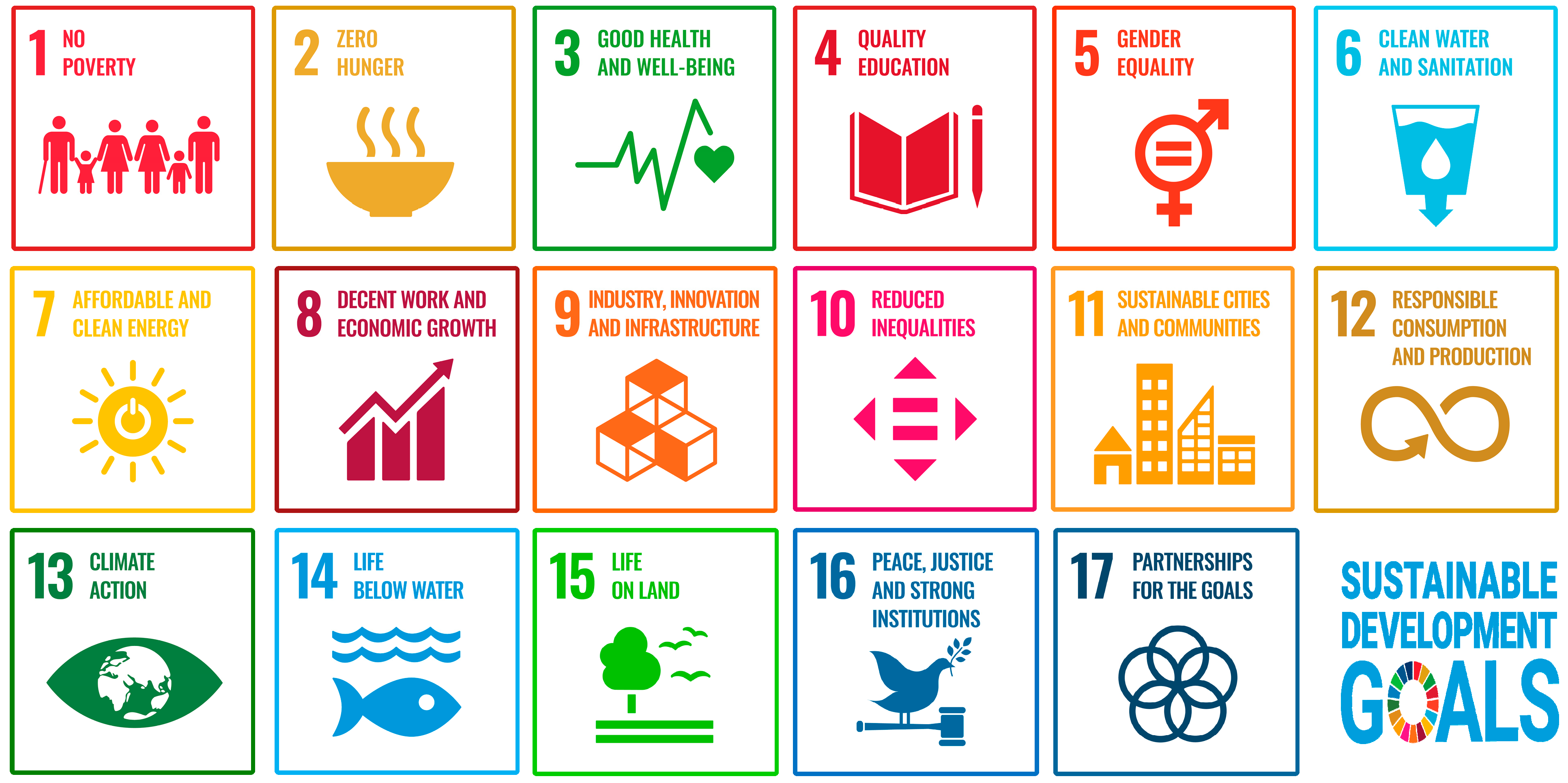
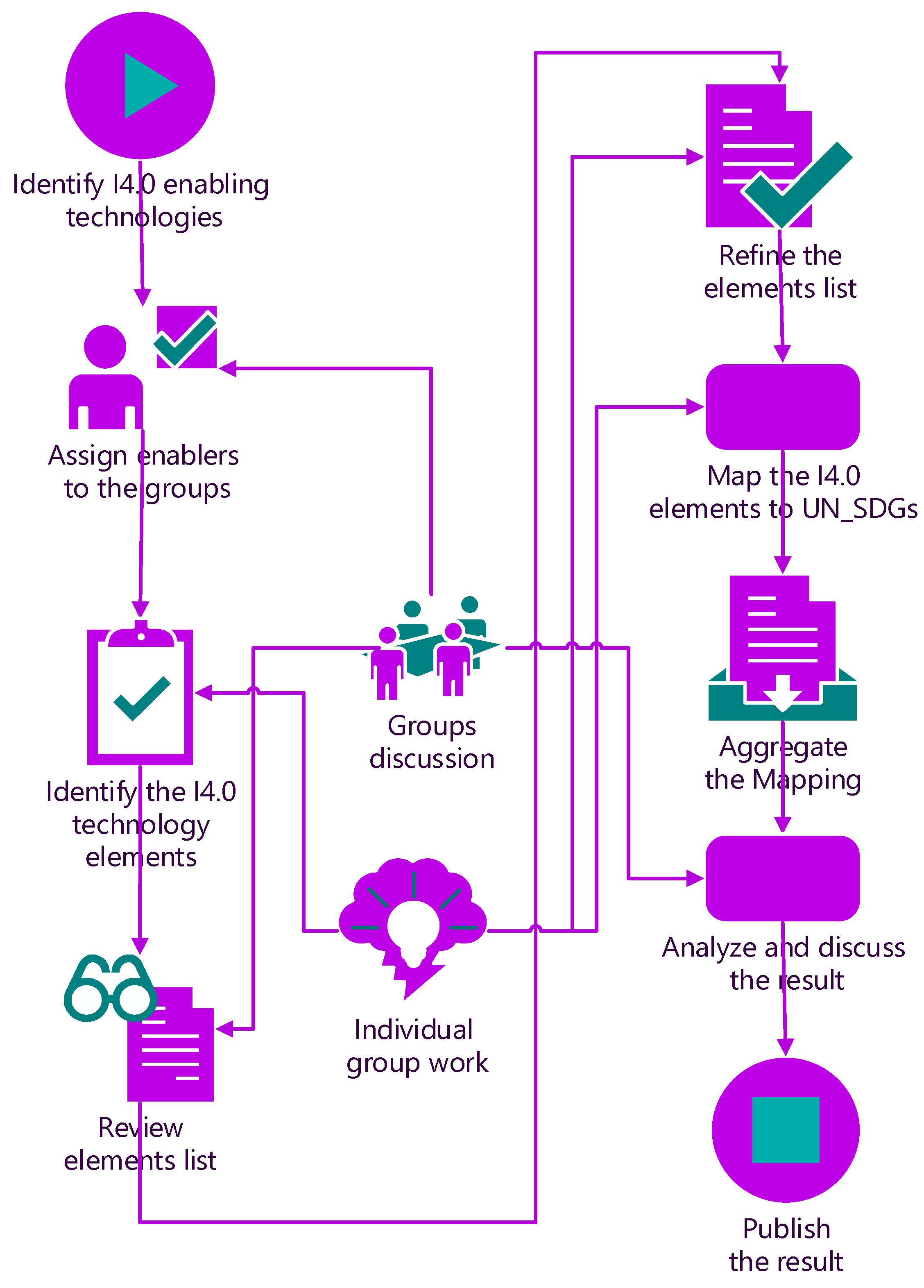
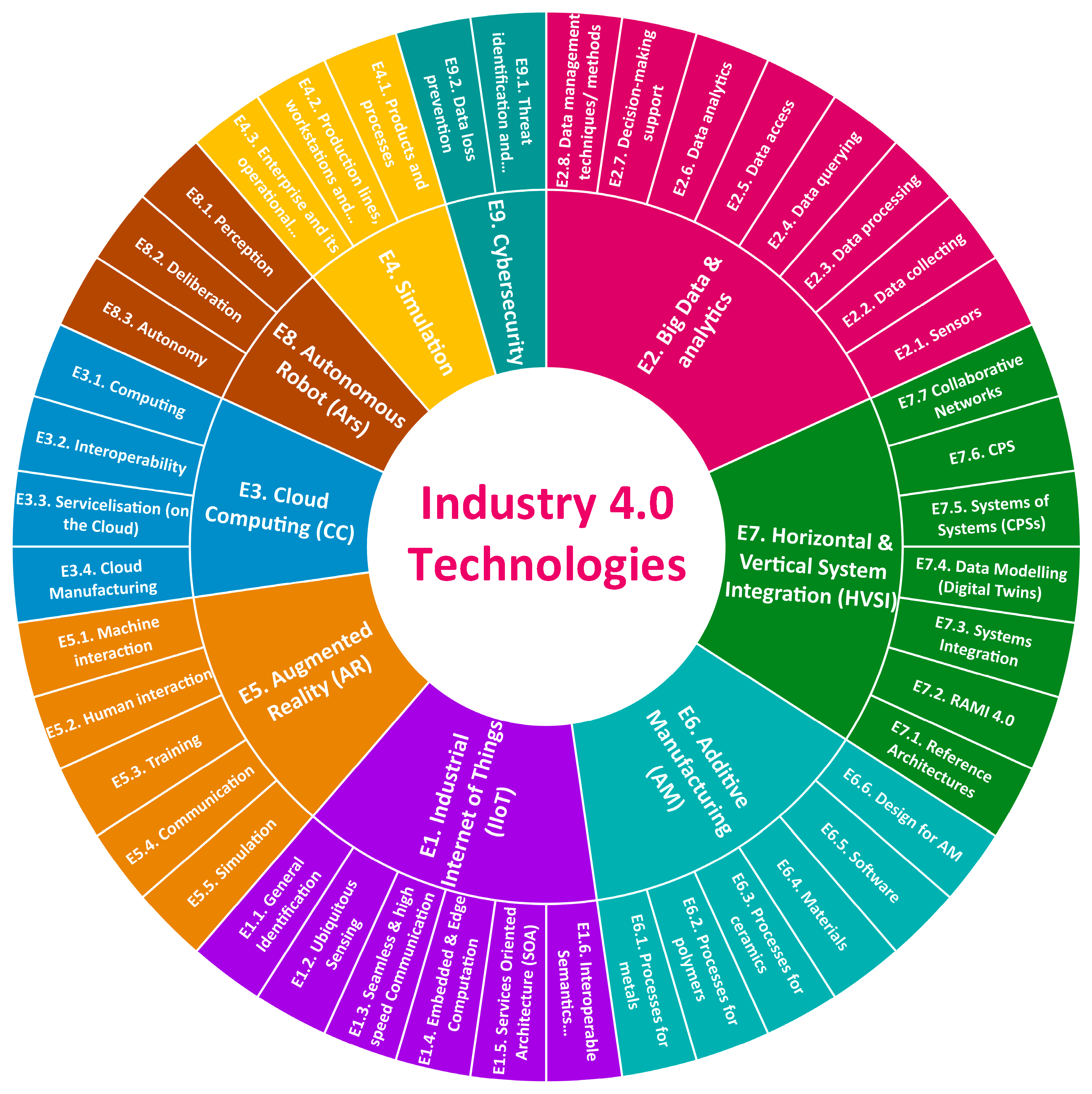
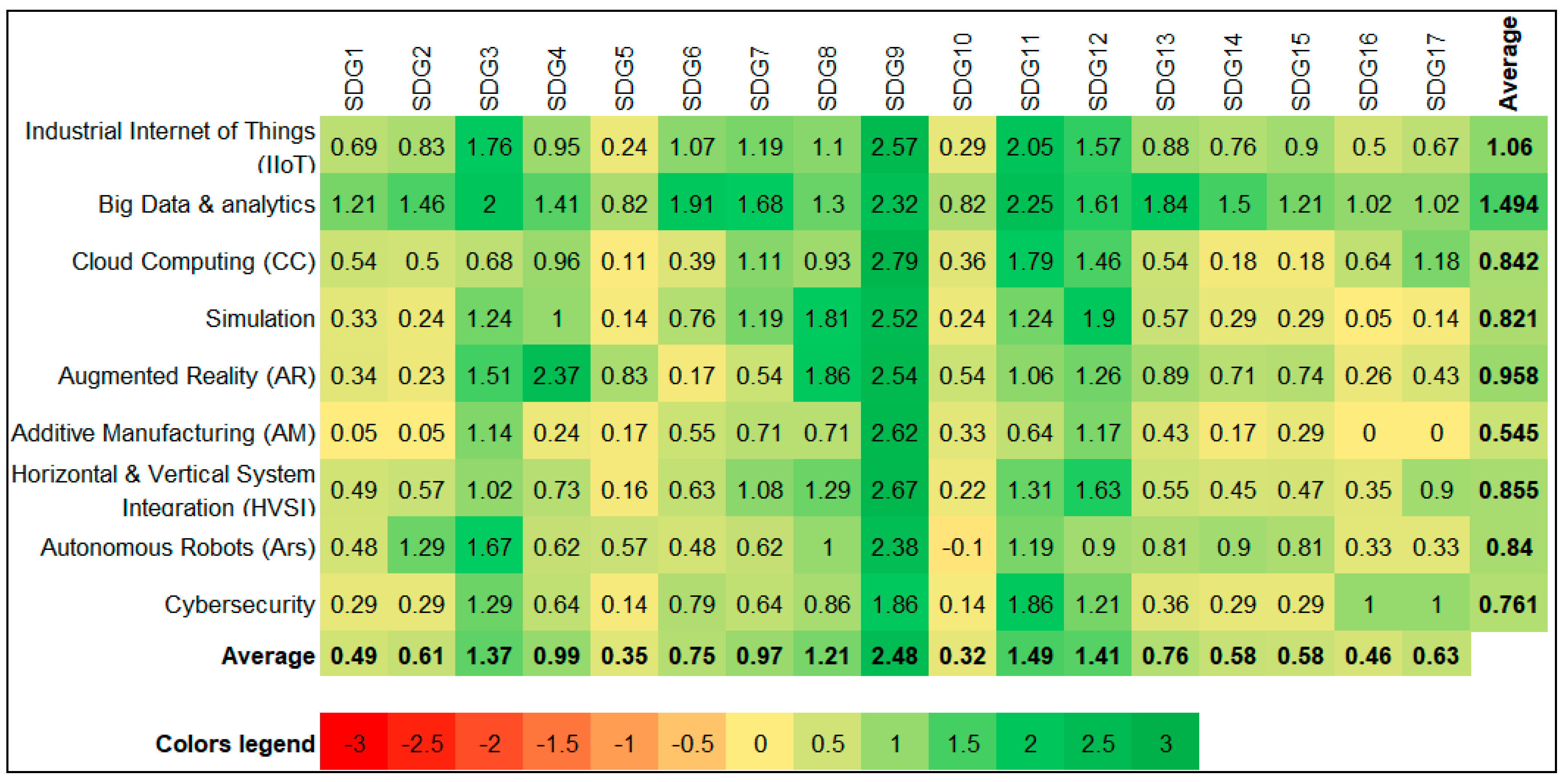
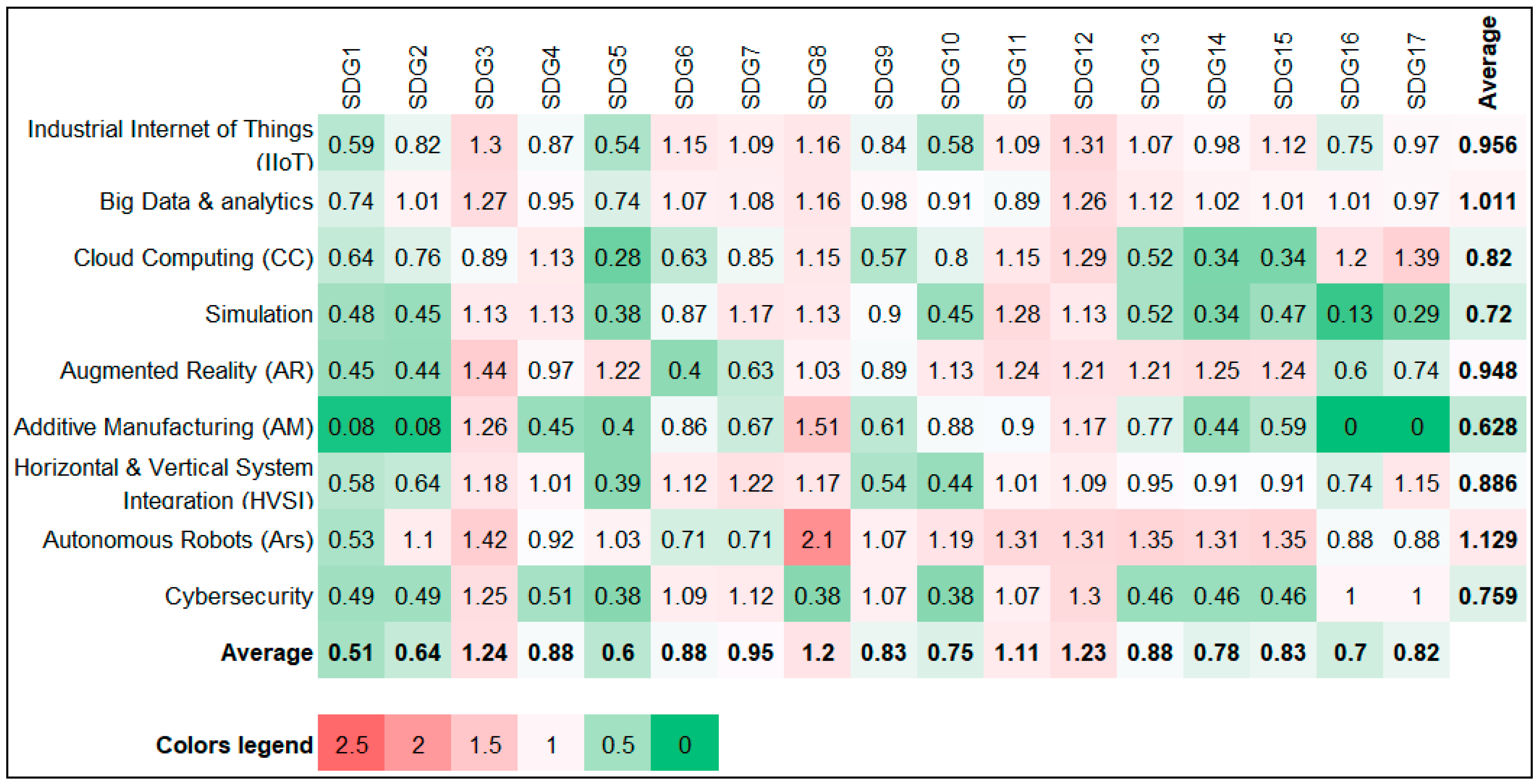
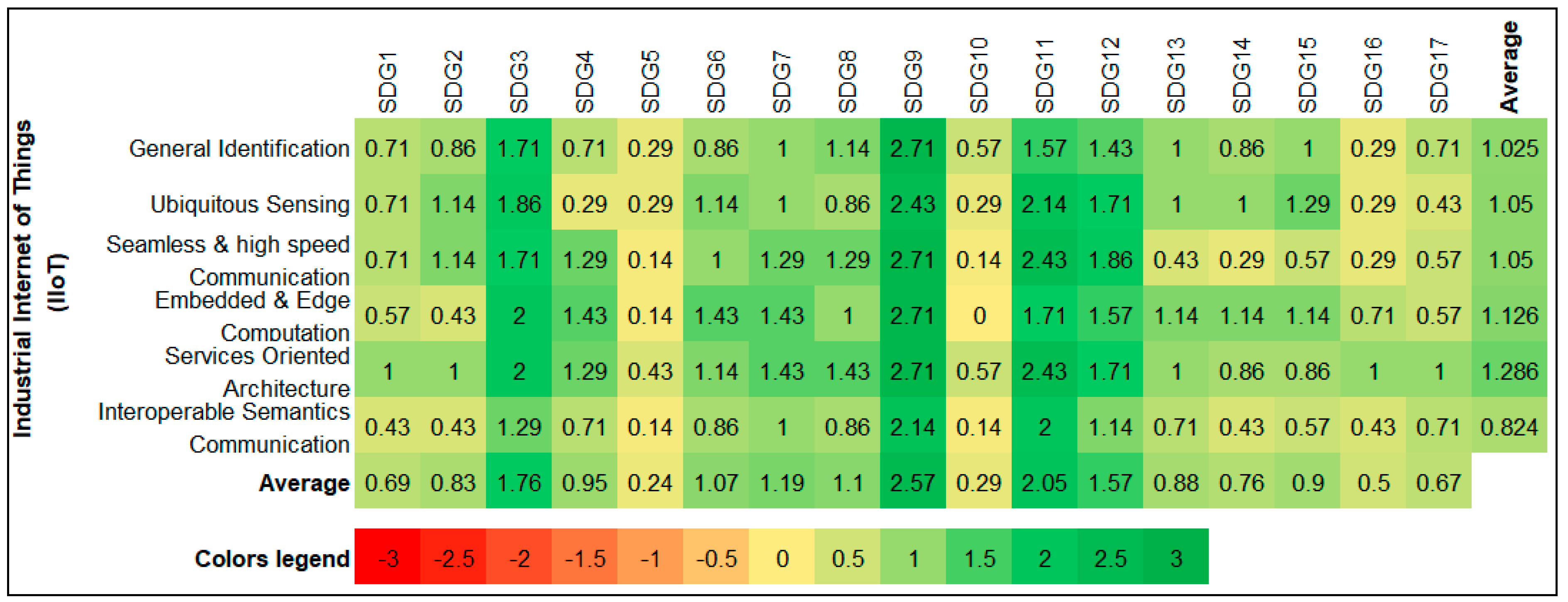
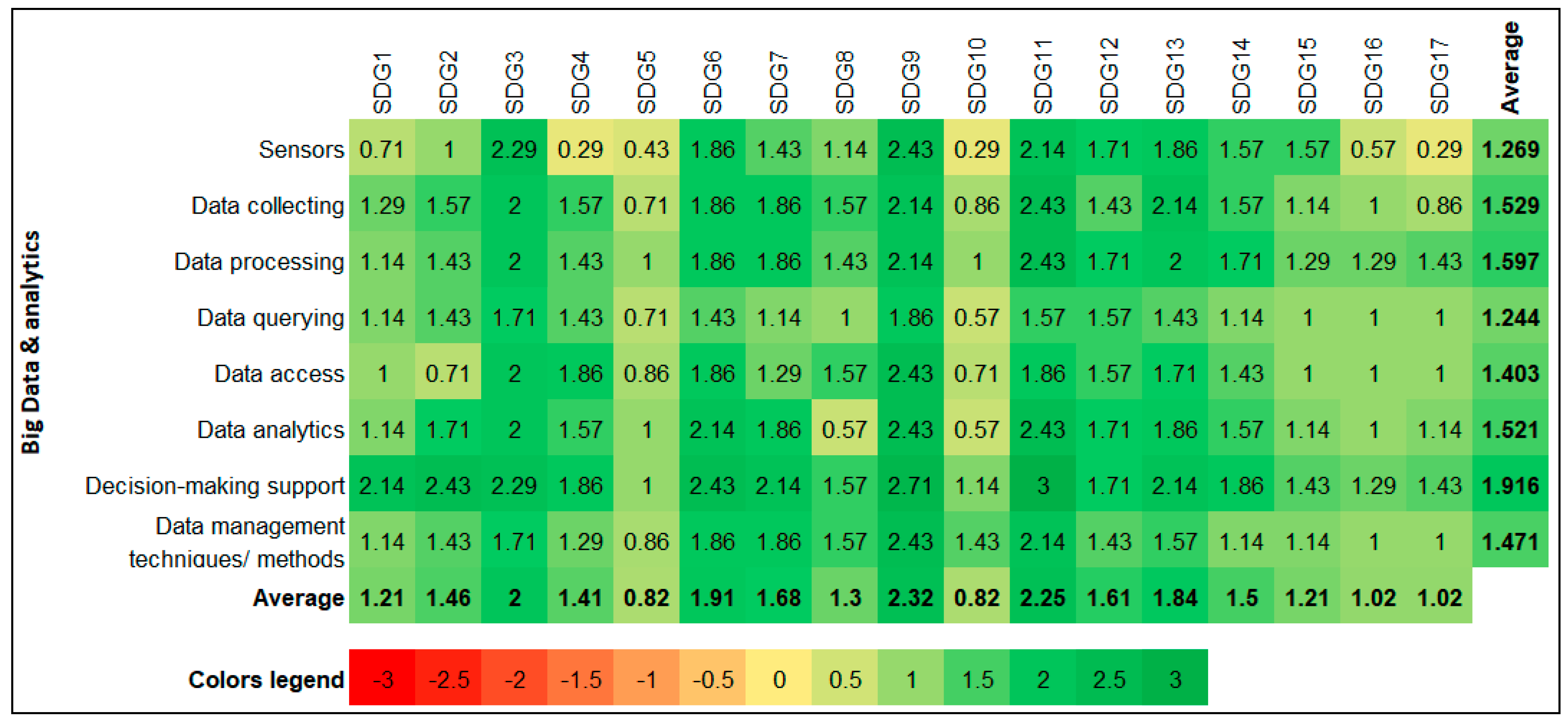


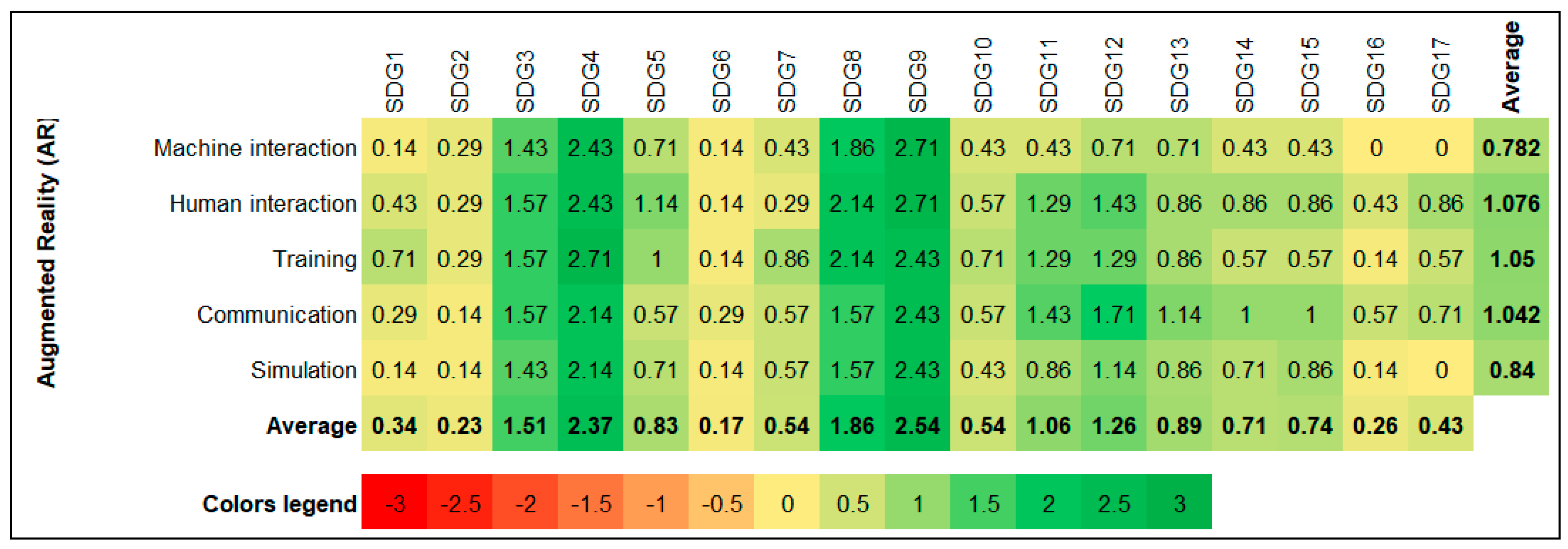
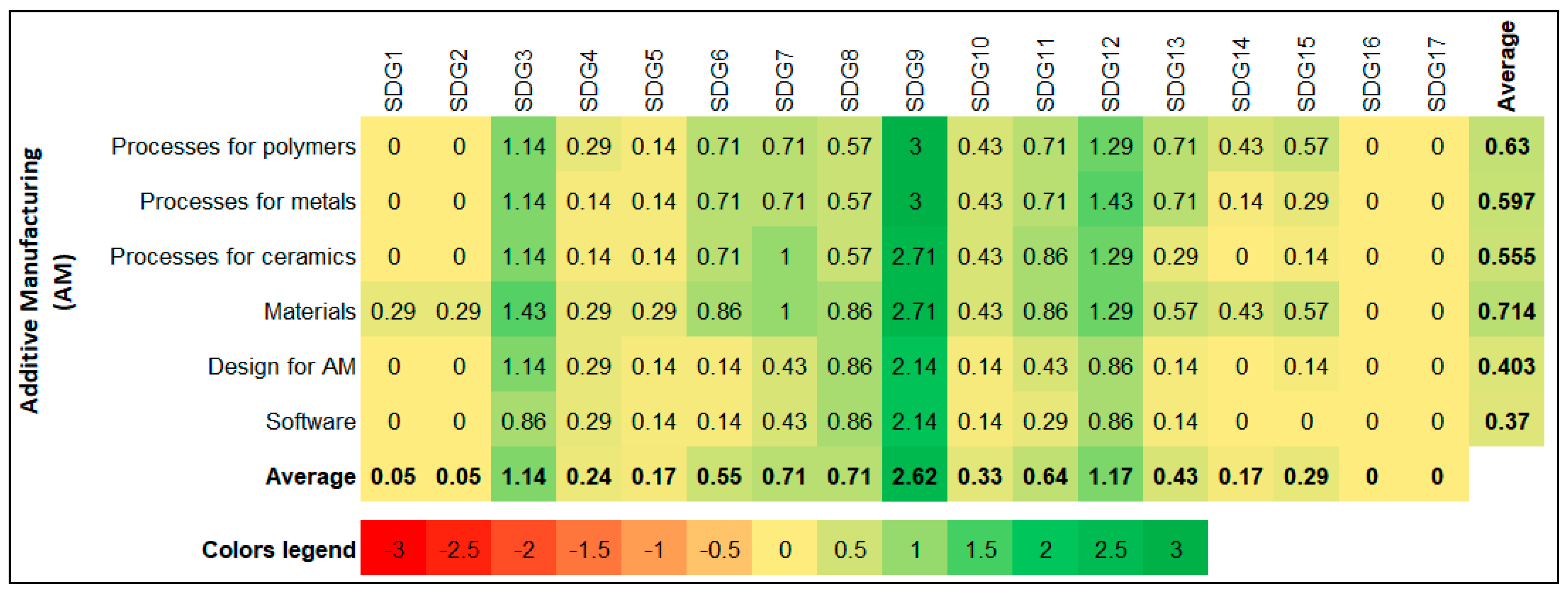
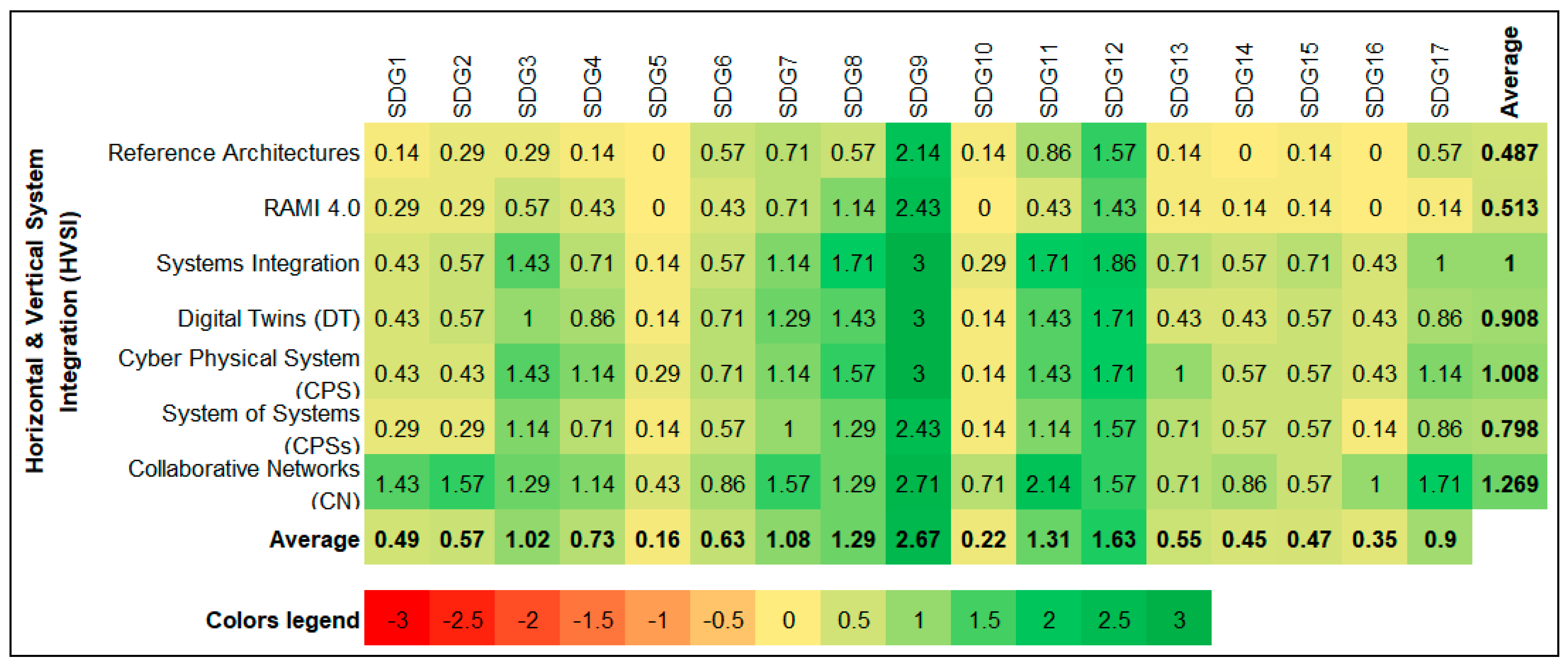


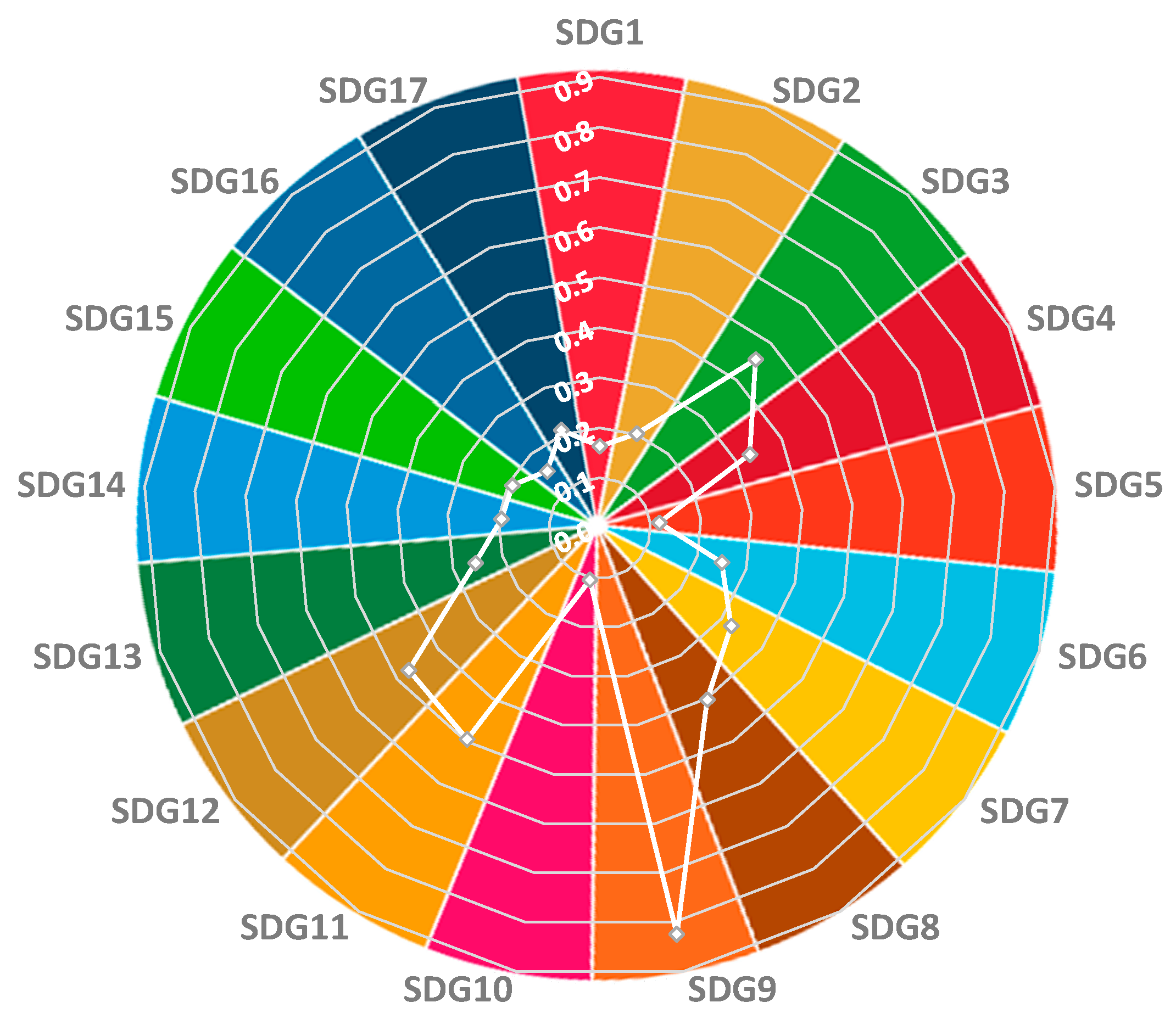
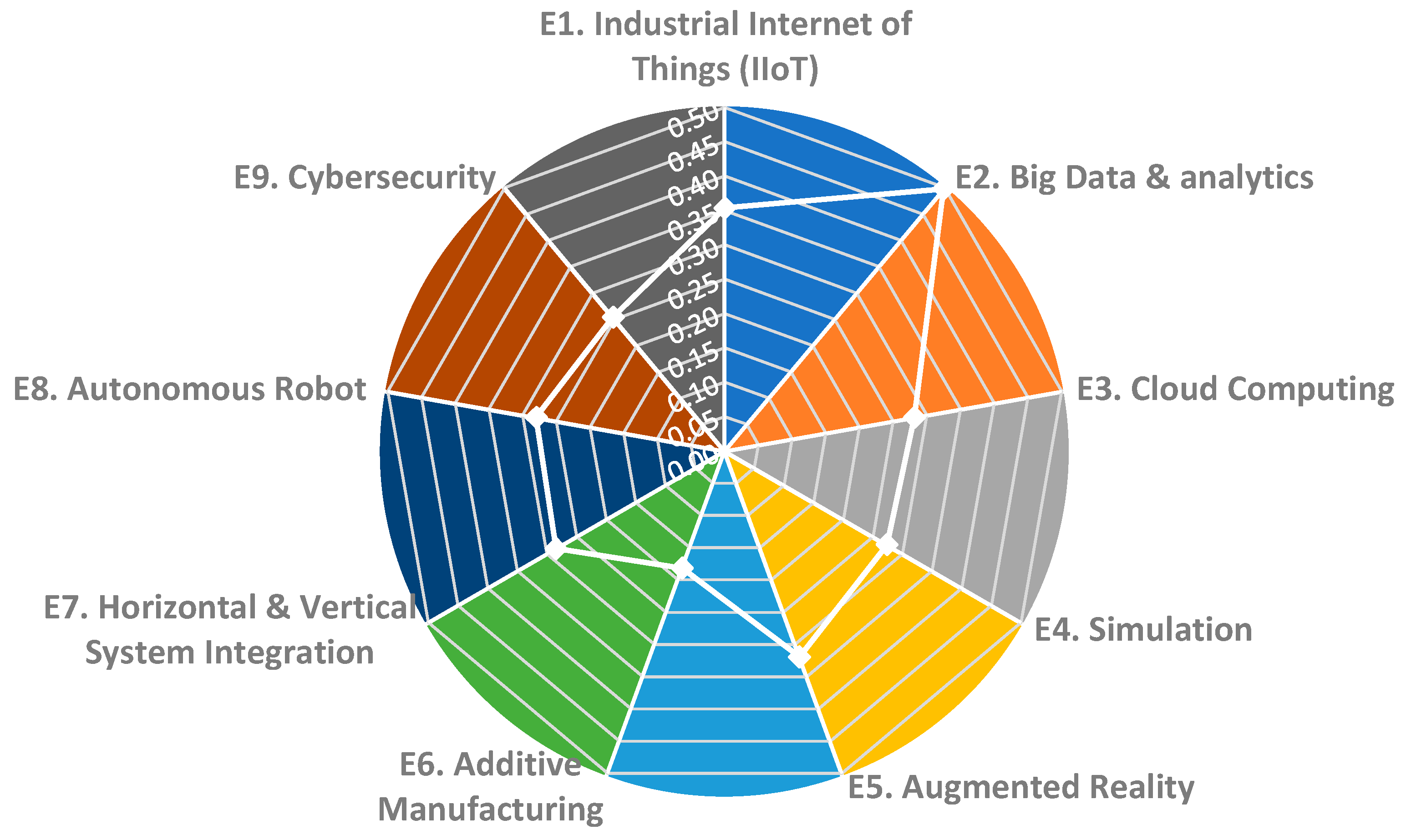
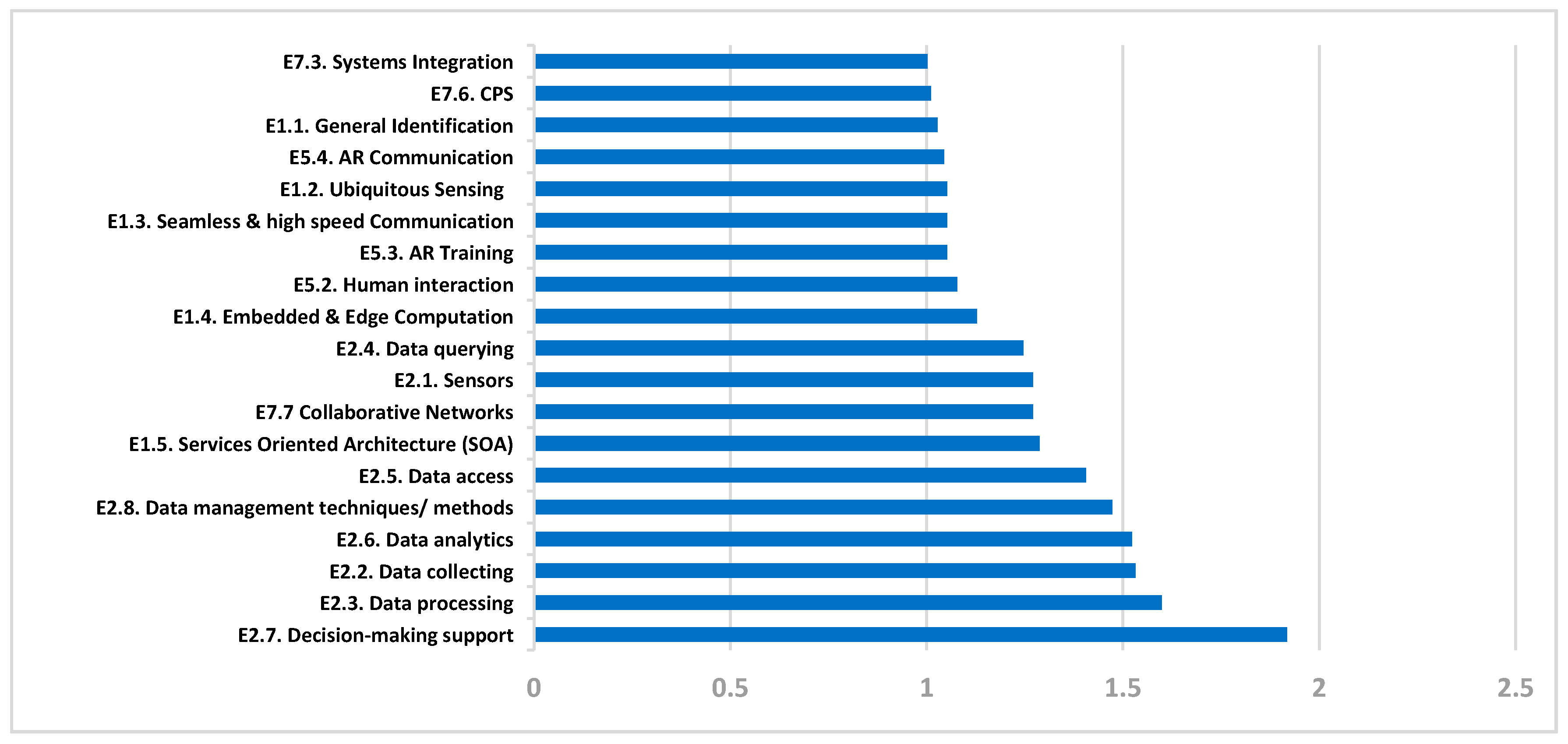
| Table Abbreviation | Sustainability Development Goals | Abbreviation | Sustainability Development Goals |
|---|---|---|---|
| SDG1 | No Poverty | SDG10 | Reduced Inequality |
| SDG2 | Zero Hunger | SDG11 | Sustainable Cities and Communities |
| SDG3 | Good Health and Well-being | SDG12 | Responsible Consumption and Production |
| SDG4 | Quality Education | SDG13 | Climate Action |
| SDG5 | Gender Equality | SDG14 | Life Below Water |
| SDG6 | Clean Water and Sanitation | SDG15 | Life on Land |
| SDG7 | Affordable and Clean Energy | SDG16 | Peace, Justice and Strong Institutions |
| SDG8 | Decent Work and Economic Growth | SDG17 | Partnerships to achieve Goals |
| SDG9 | Industry, Innovation, and Infrastructure |
Publisher’s Note: MDPI stays neutral with regard to jurisdictional claims in published maps and institutional affiliations. |
© 2021 by the authors. Licensee MDPI, Basel, Switzerland. This article is an open access article distributed under the terms and conditions of the Creative Commons Attribution (CC BY) license (http://creativecommons.org/licenses/by/4.0/).
Share and Cite
M. Mabkhot, M.; Ferreira, P.; Maffei, A.; Podržaj, P.; Mądziel, M.; Antonelli, D.; Lanzetta, M.; Barata, J.; Boffa, E.; Finžgar, M.; et al. Mapping Industry 4.0 Enabling Technologies into United Nations Sustainability Development Goals. Sustainability 2021, 13, 2560. https://doi.org/10.3390/su13052560
M. Mabkhot M, Ferreira P, Maffei A, Podržaj P, Mądziel M, Antonelli D, Lanzetta M, Barata J, Boffa E, Finžgar M, et al. Mapping Industry 4.0 Enabling Technologies into United Nations Sustainability Development Goals. Sustainability. 2021; 13(5):2560. https://doi.org/10.3390/su13052560
Chicago/Turabian StyleM. Mabkhot, Mohammed, Pedro Ferreira, Antonio Maffei, Primož Podržaj, Maksymilian Mądziel, Dario Antonelli, Michele Lanzetta, Jose Barata, Eleonora Boffa, Miha Finžgar, and et al. 2021. "Mapping Industry 4.0 Enabling Technologies into United Nations Sustainability Development Goals" Sustainability 13, no. 5: 2560. https://doi.org/10.3390/su13052560
APA StyleM. Mabkhot, M., Ferreira, P., Maffei, A., Podržaj, P., Mądziel, M., Antonelli, D., Lanzetta, M., Barata, J., Boffa, E., Finžgar, M., Paśko, Ł., Minetola, P., Chelli, R., Nikghadam-Hojjati, S., Wang, X. V., Priarone, P. C., Lupi, F., Litwin, P., Stadnicka, D., & Lohse, N. (2021). Mapping Industry 4.0 Enabling Technologies into United Nations Sustainability Development Goals. Sustainability, 13(5), 2560. https://doi.org/10.3390/su13052560

















